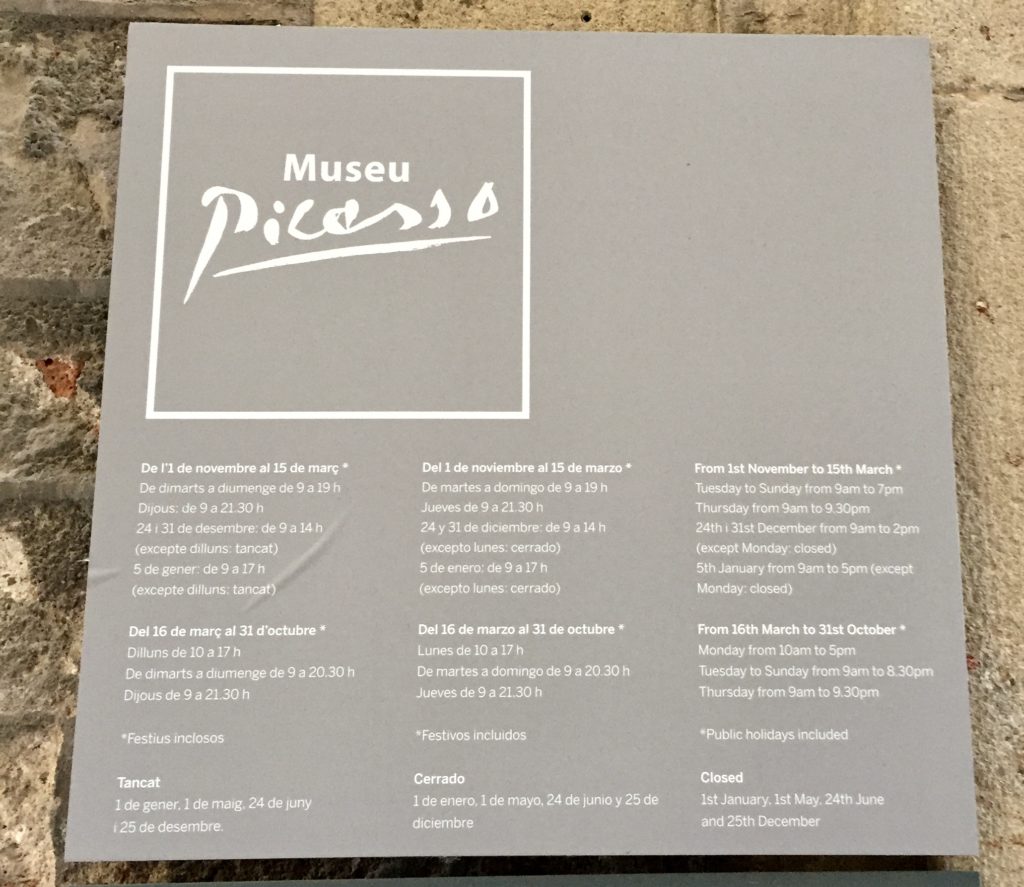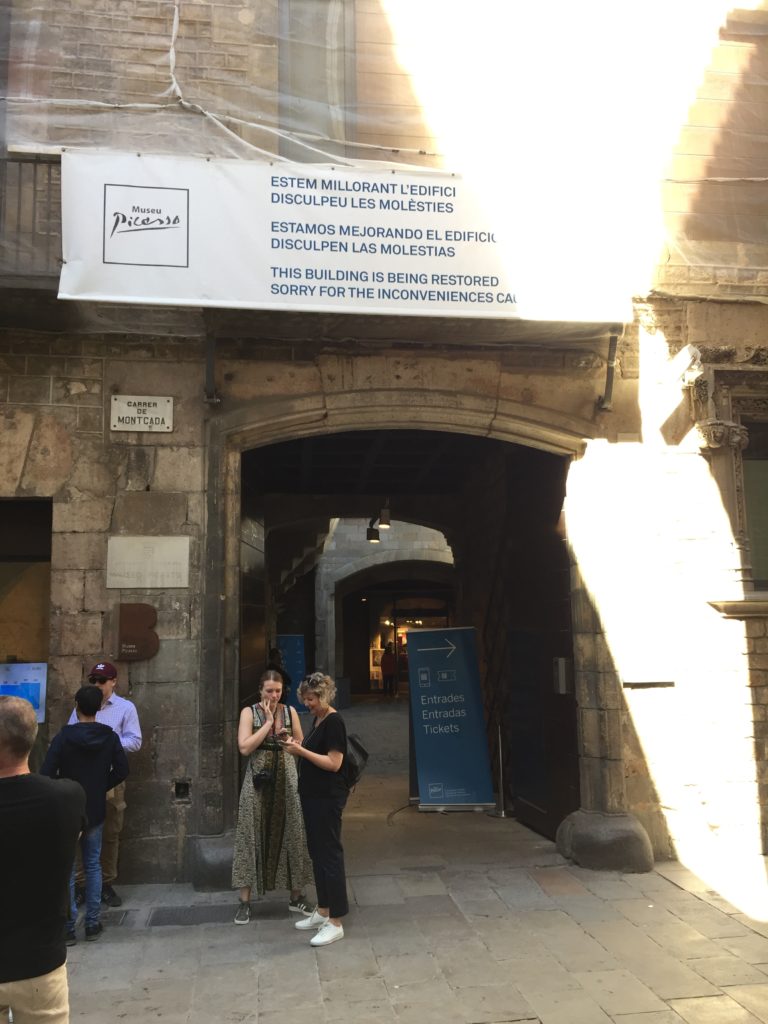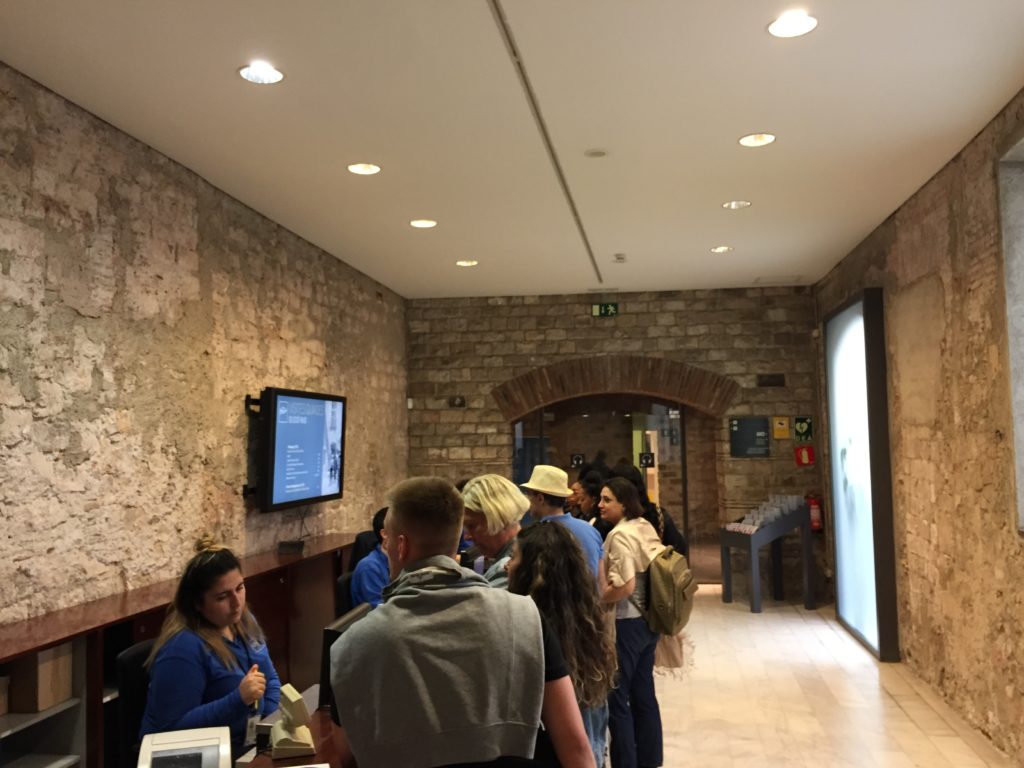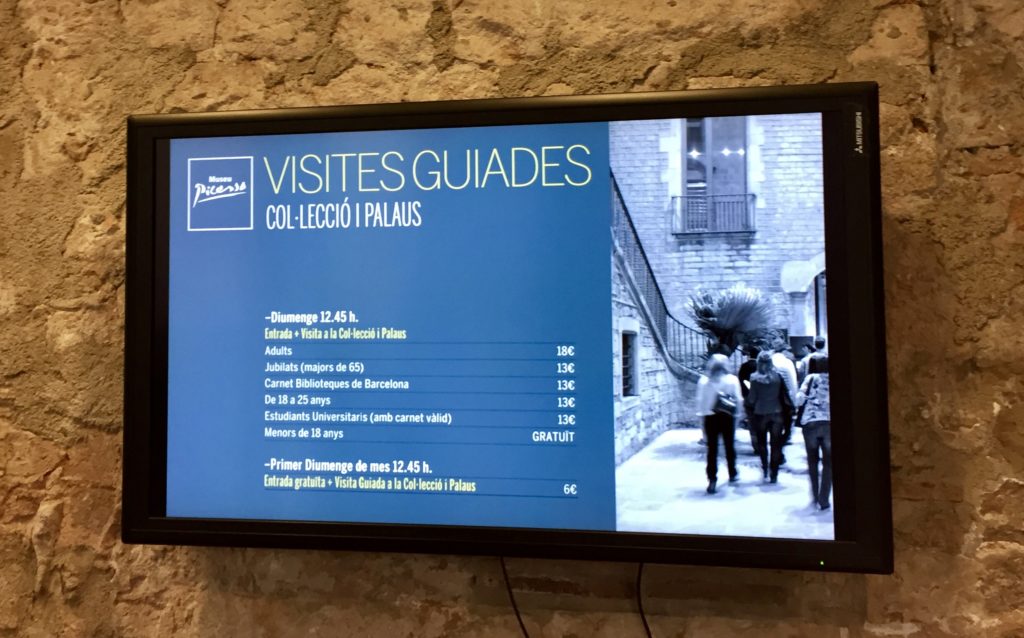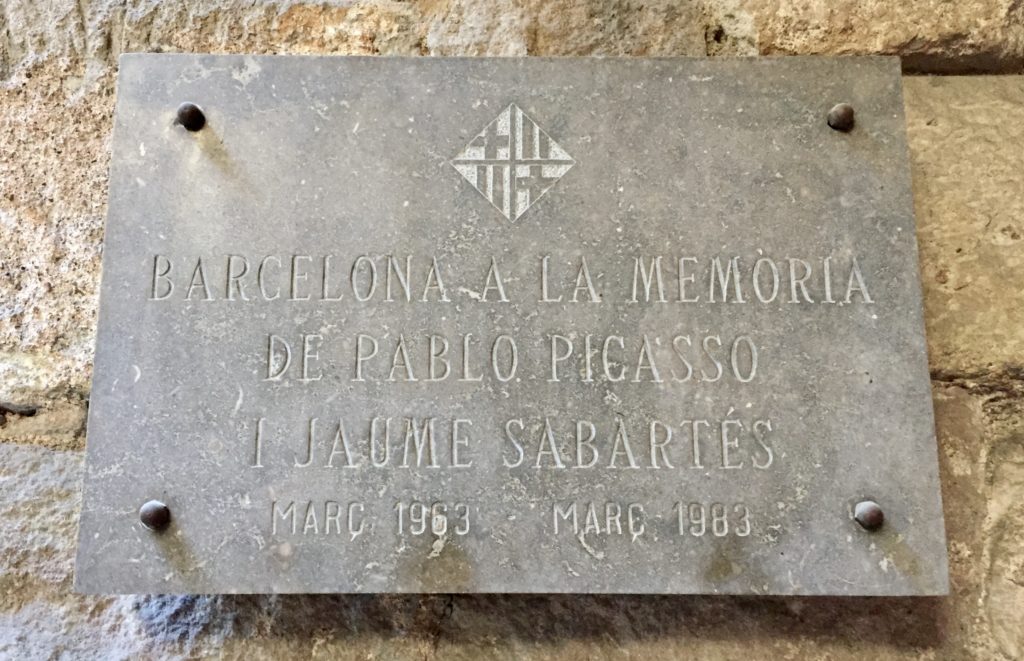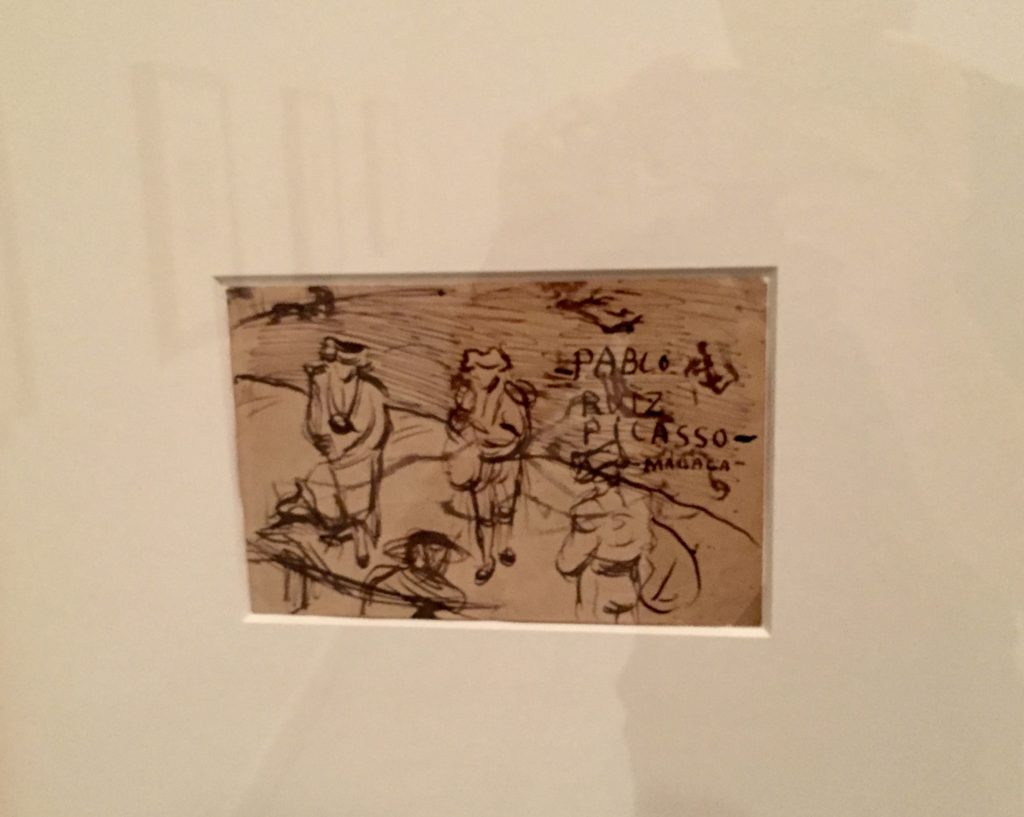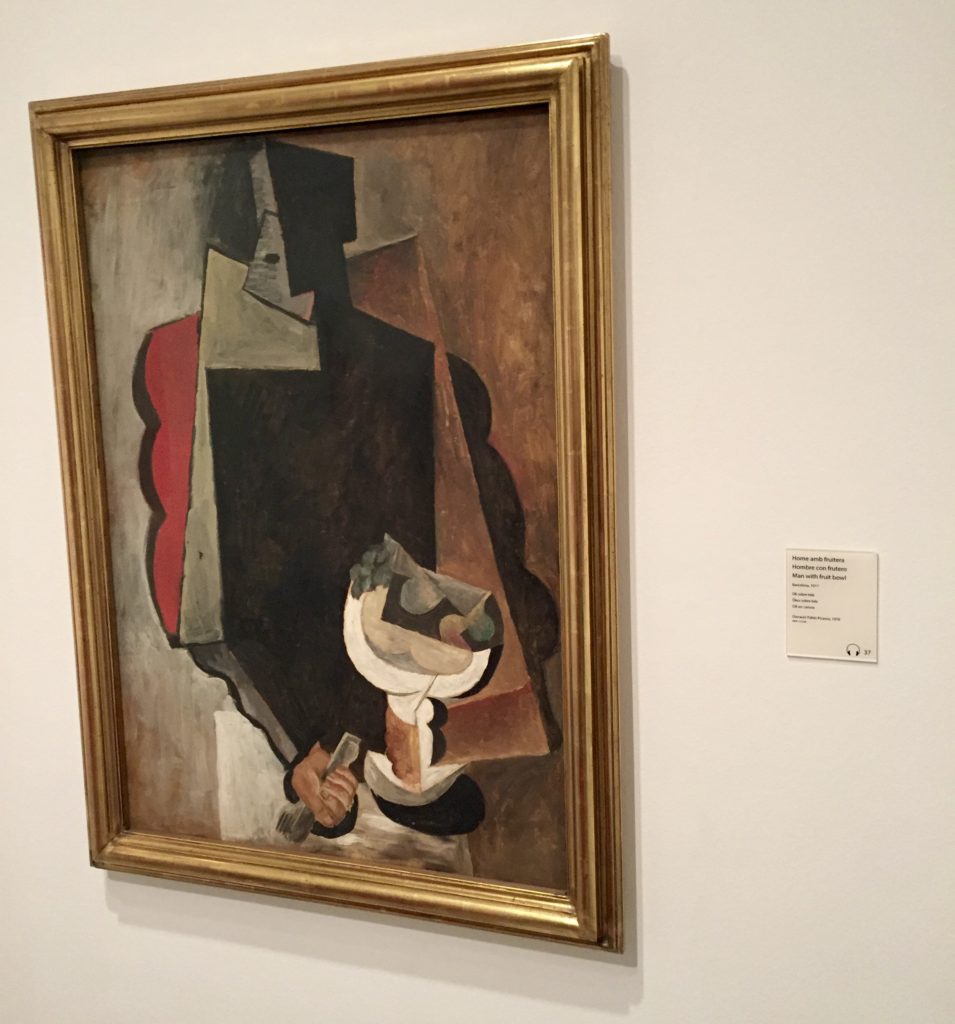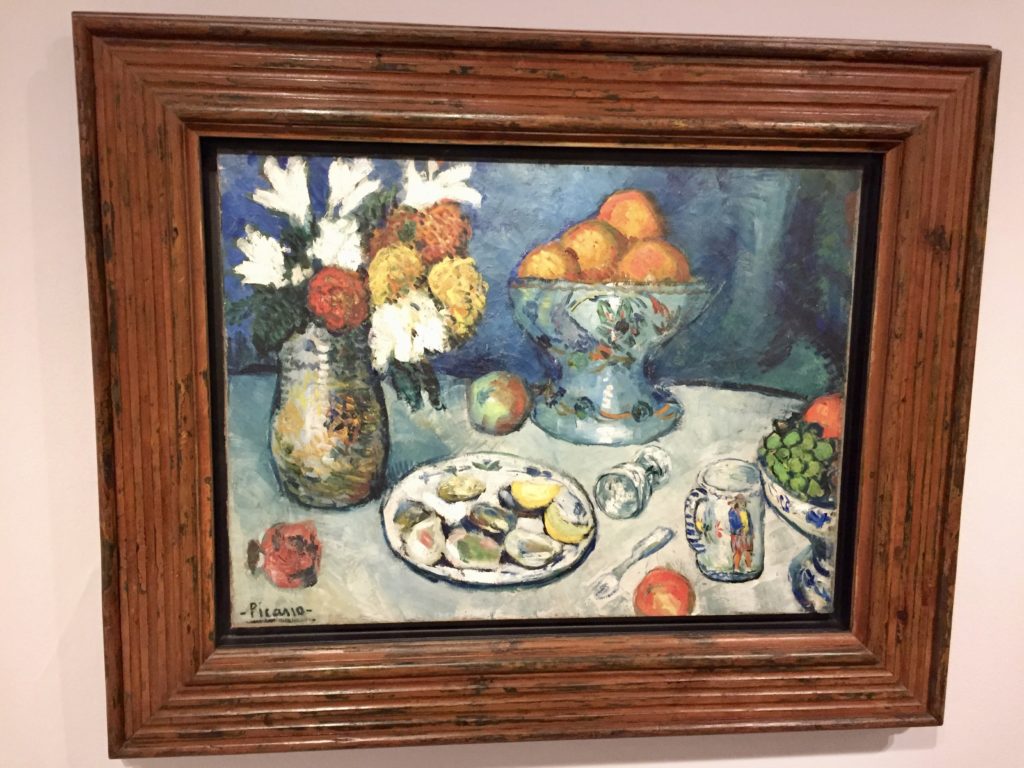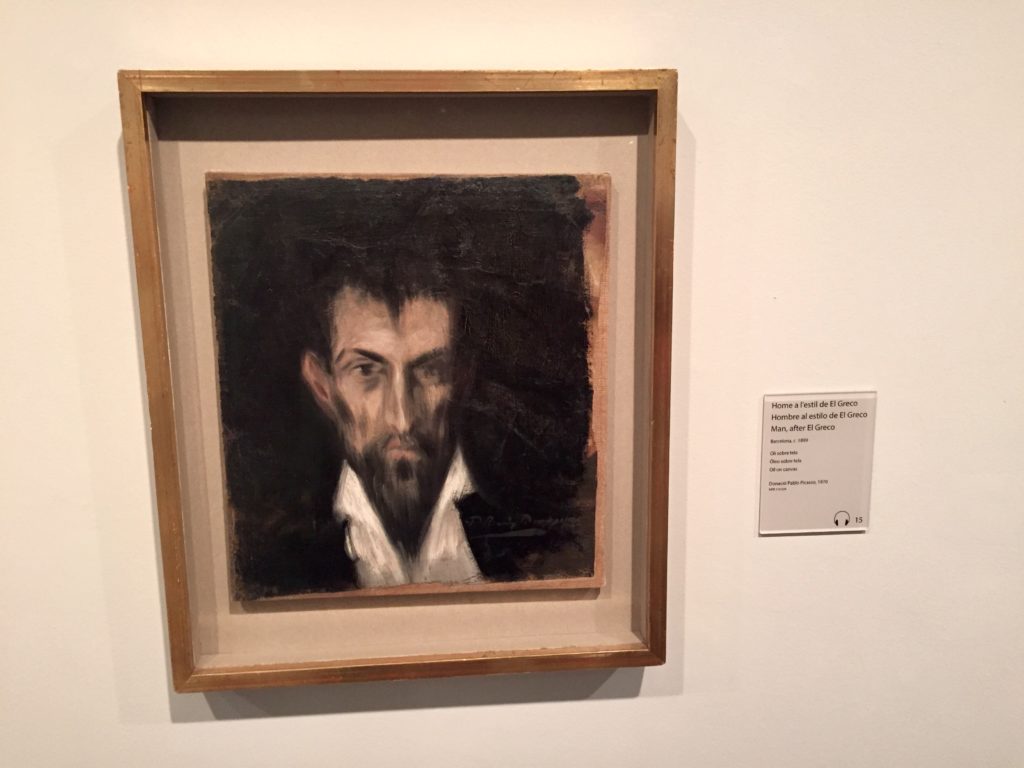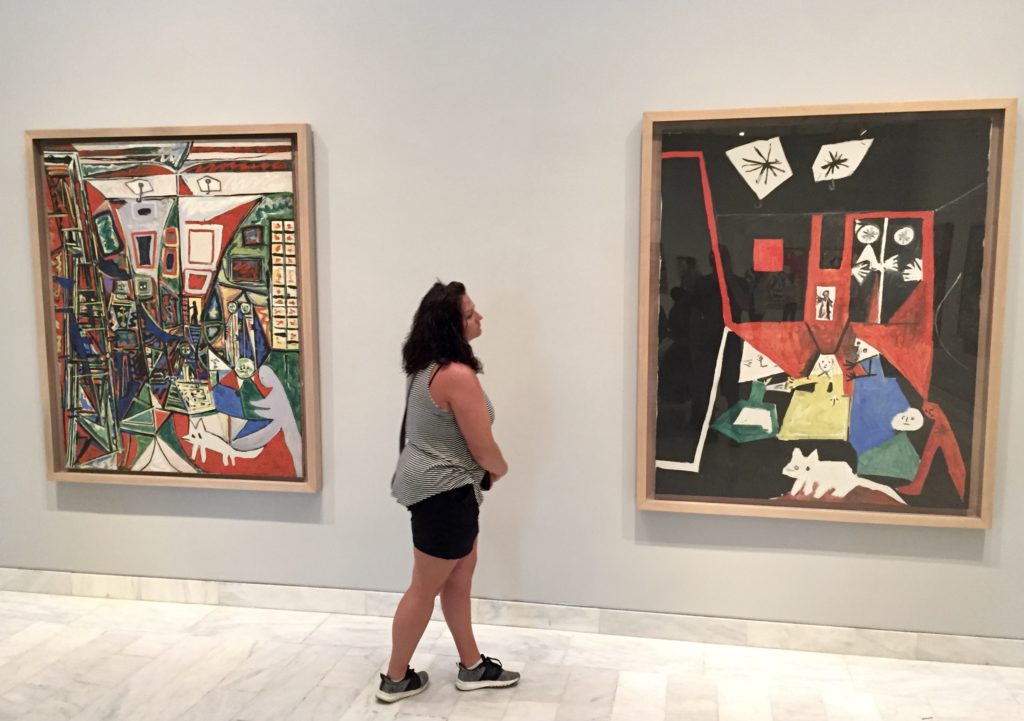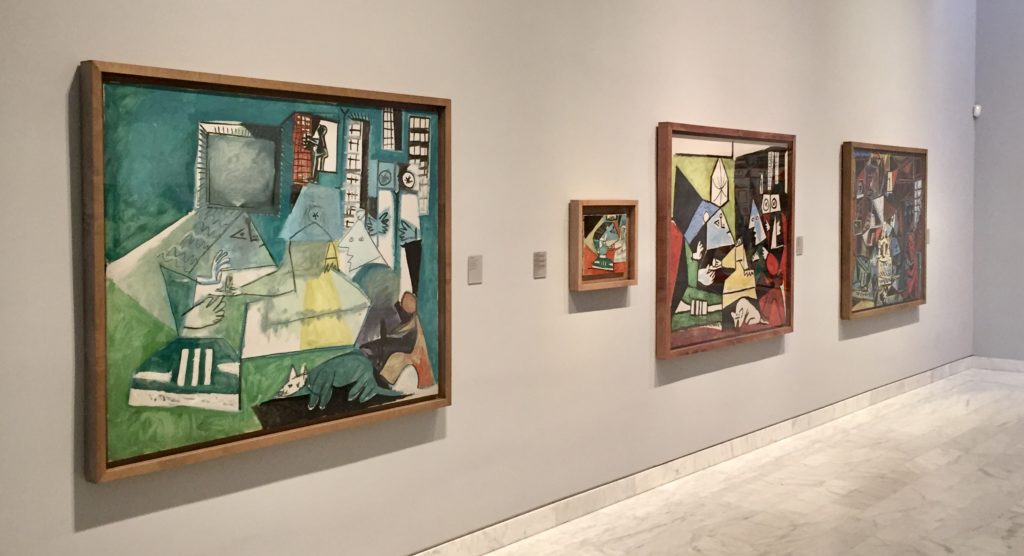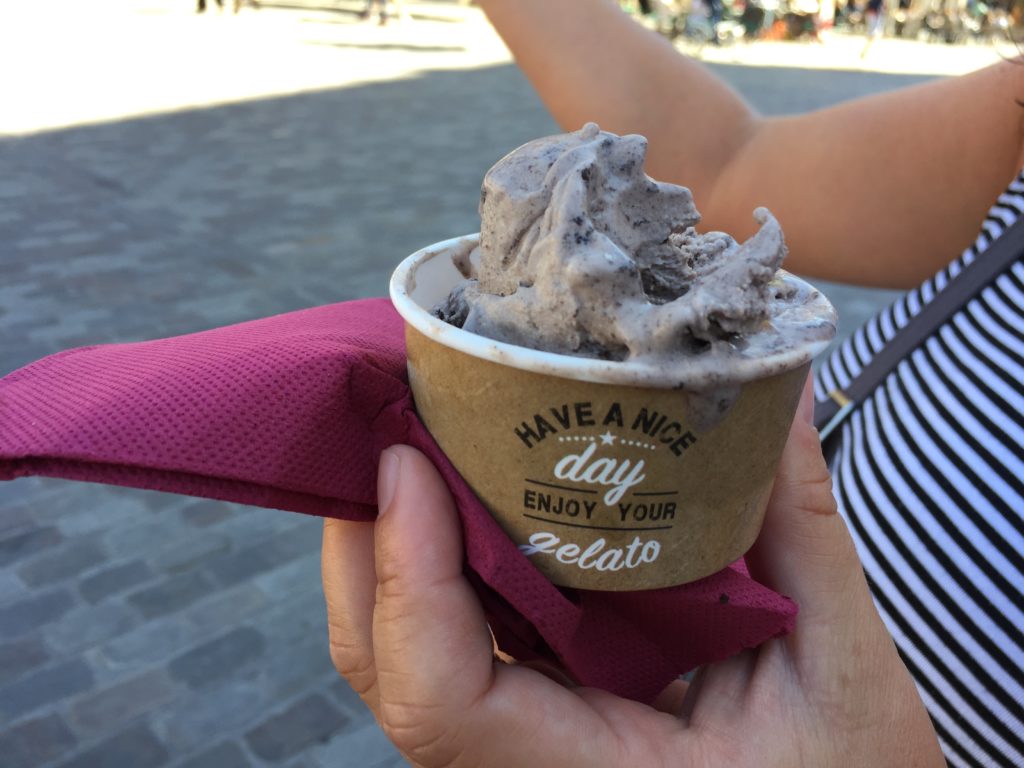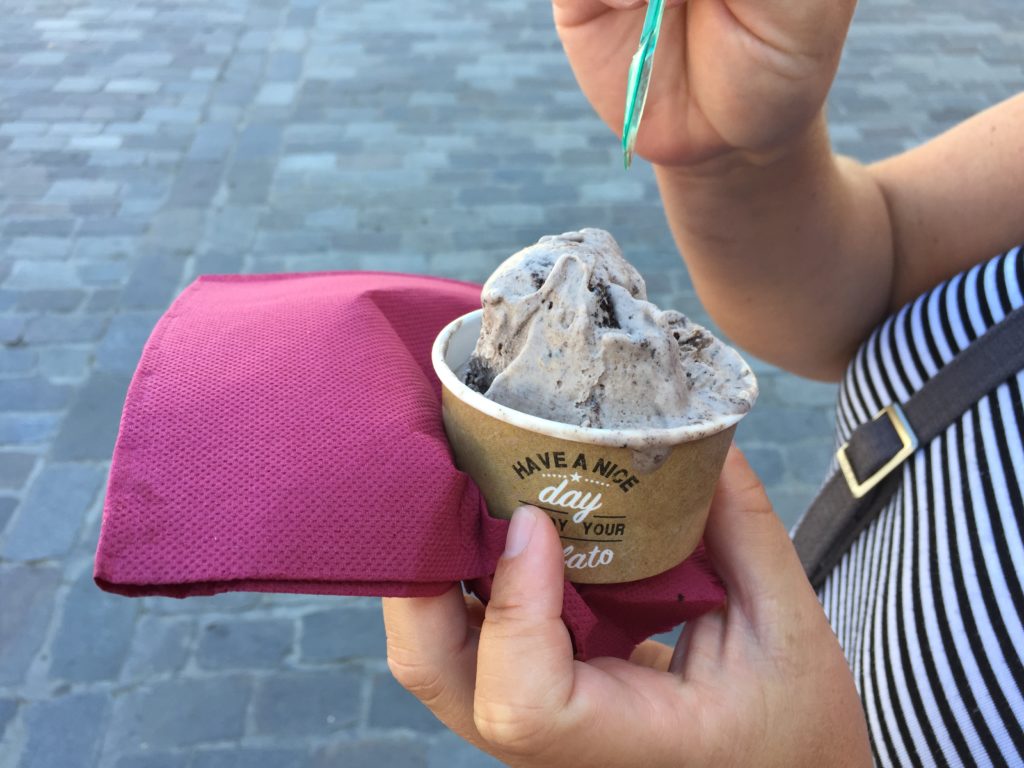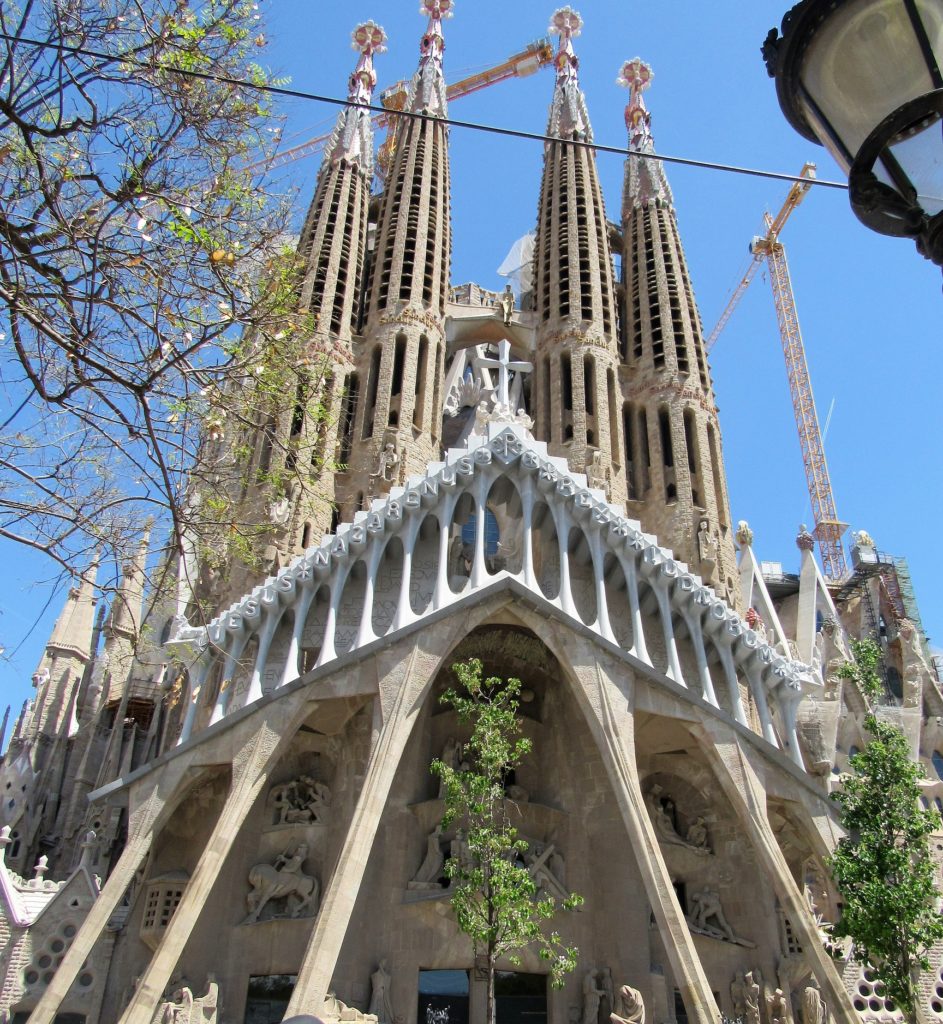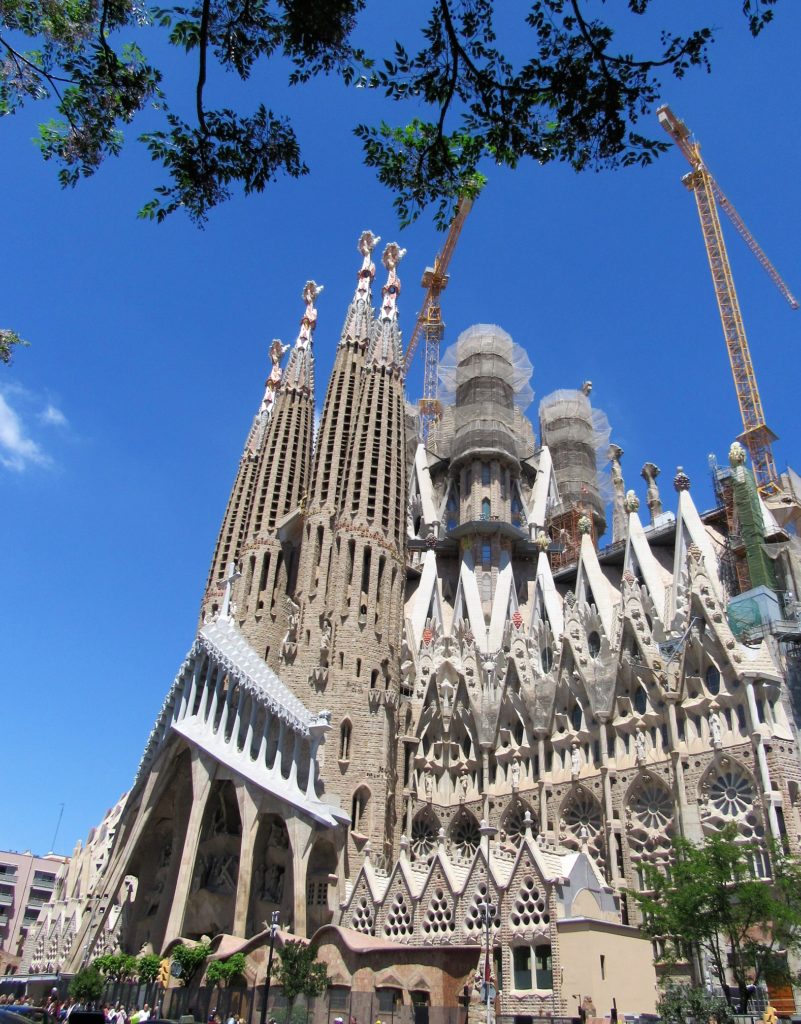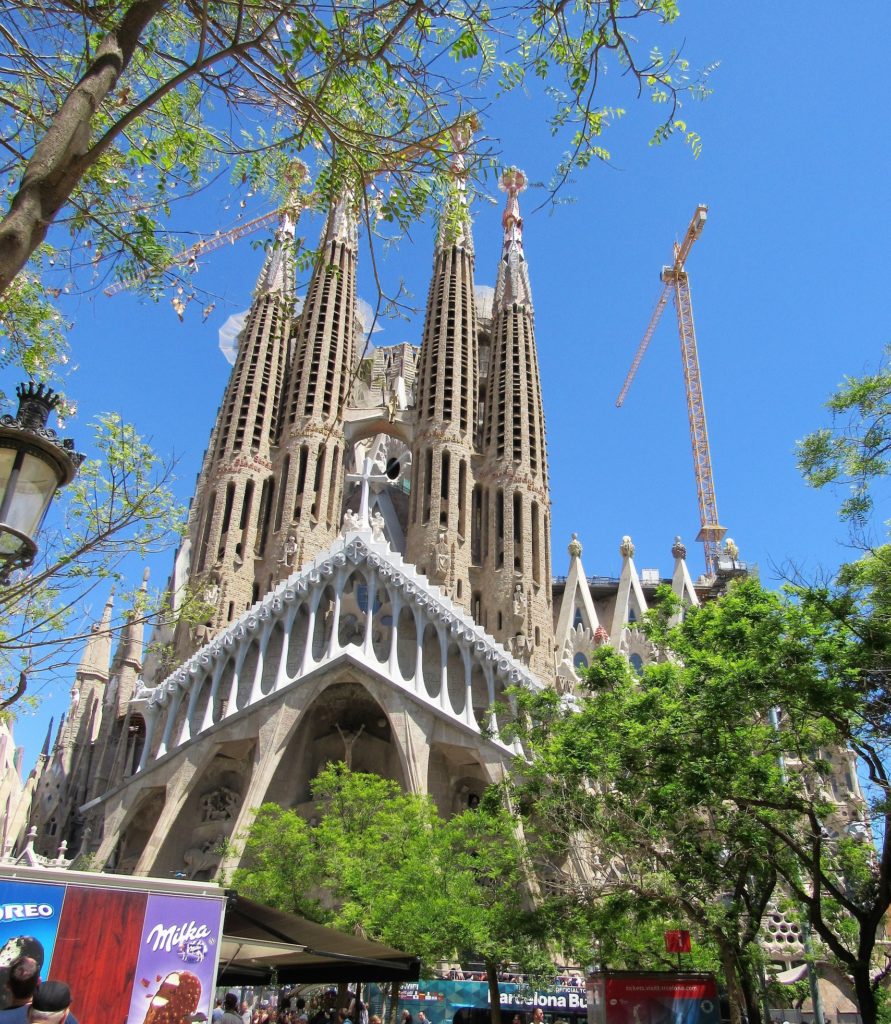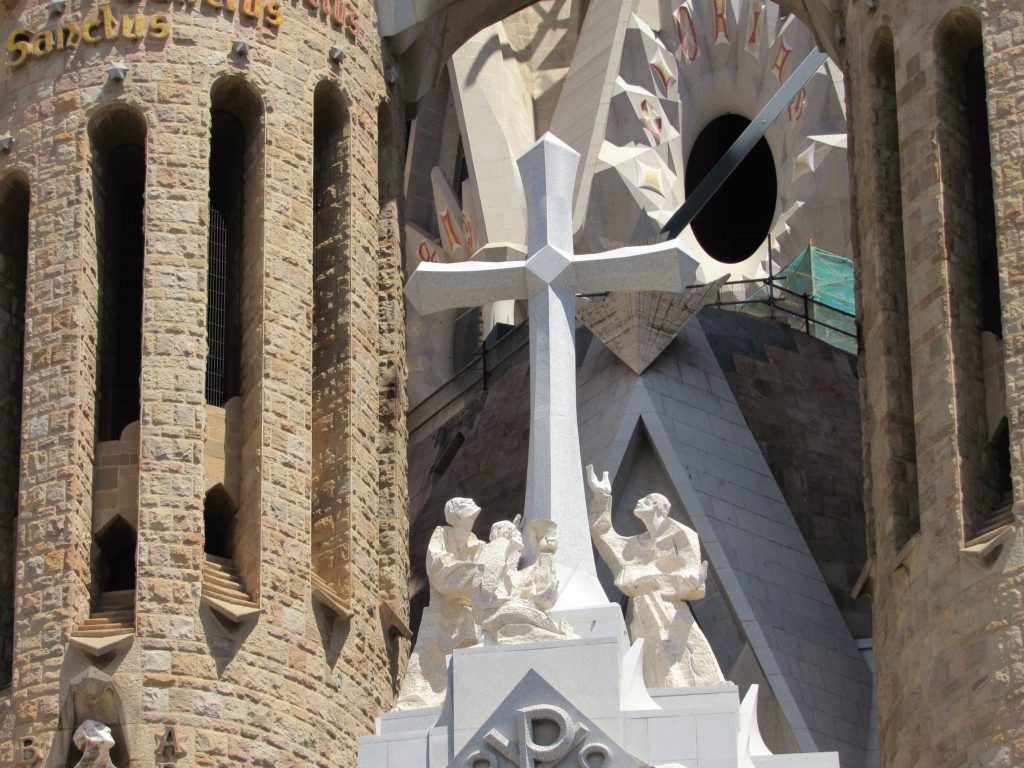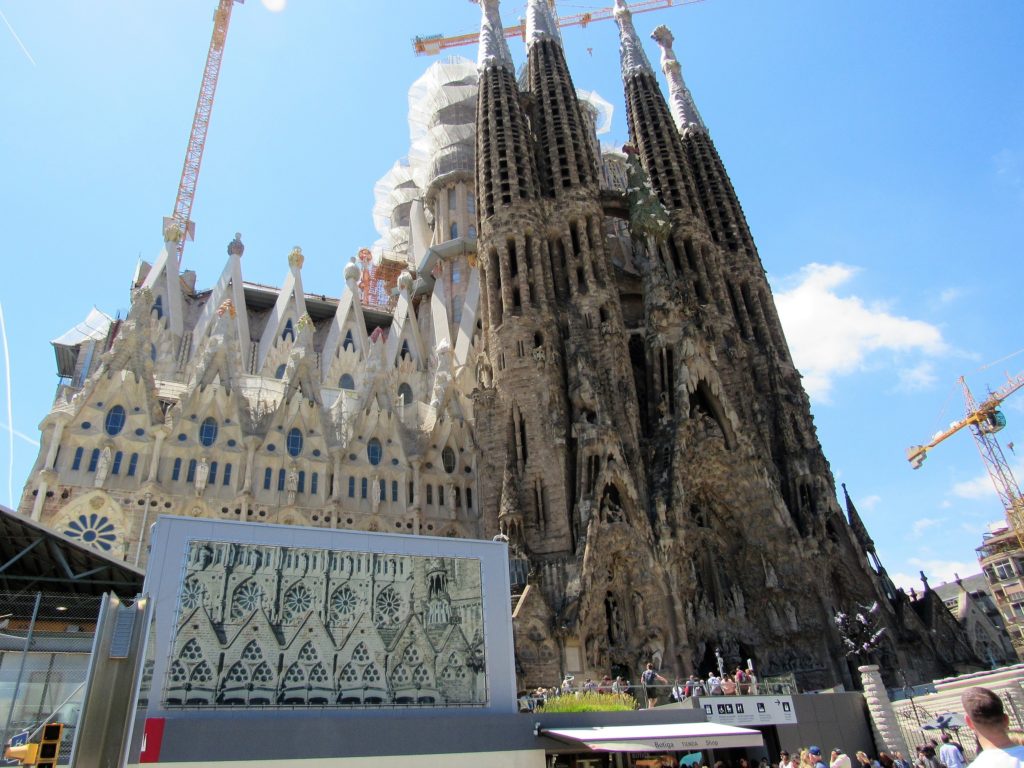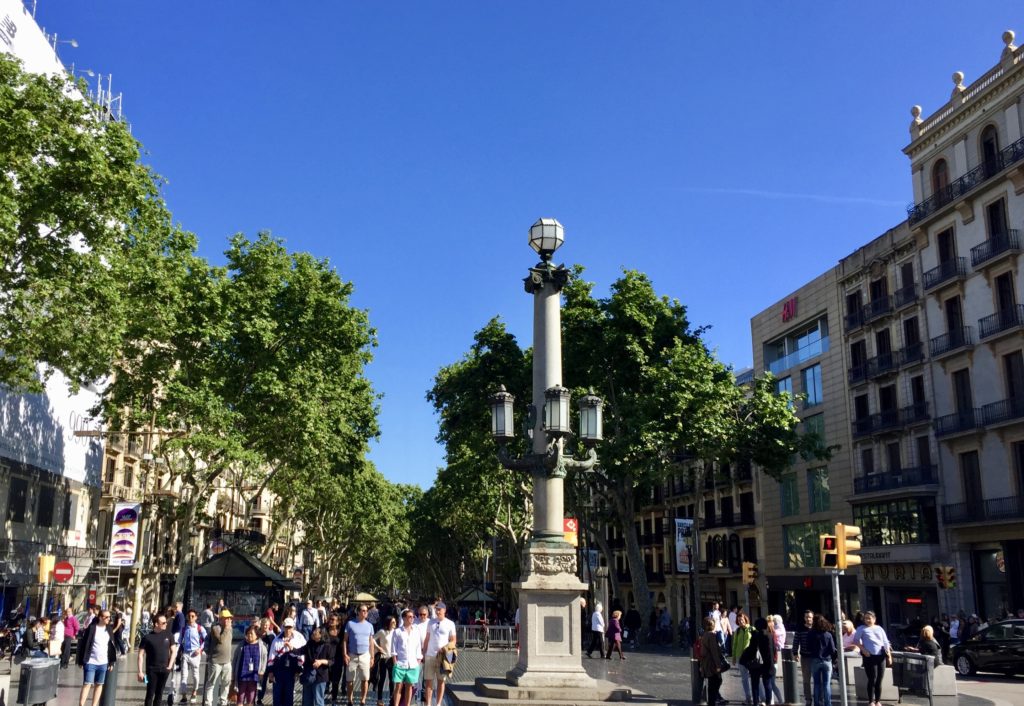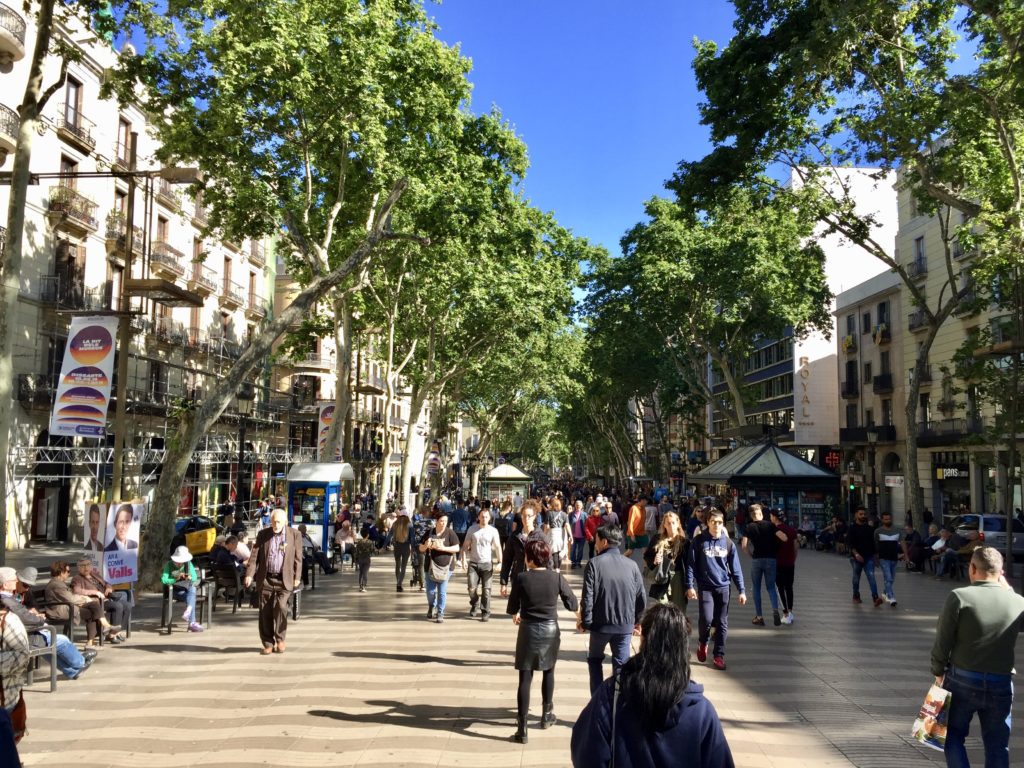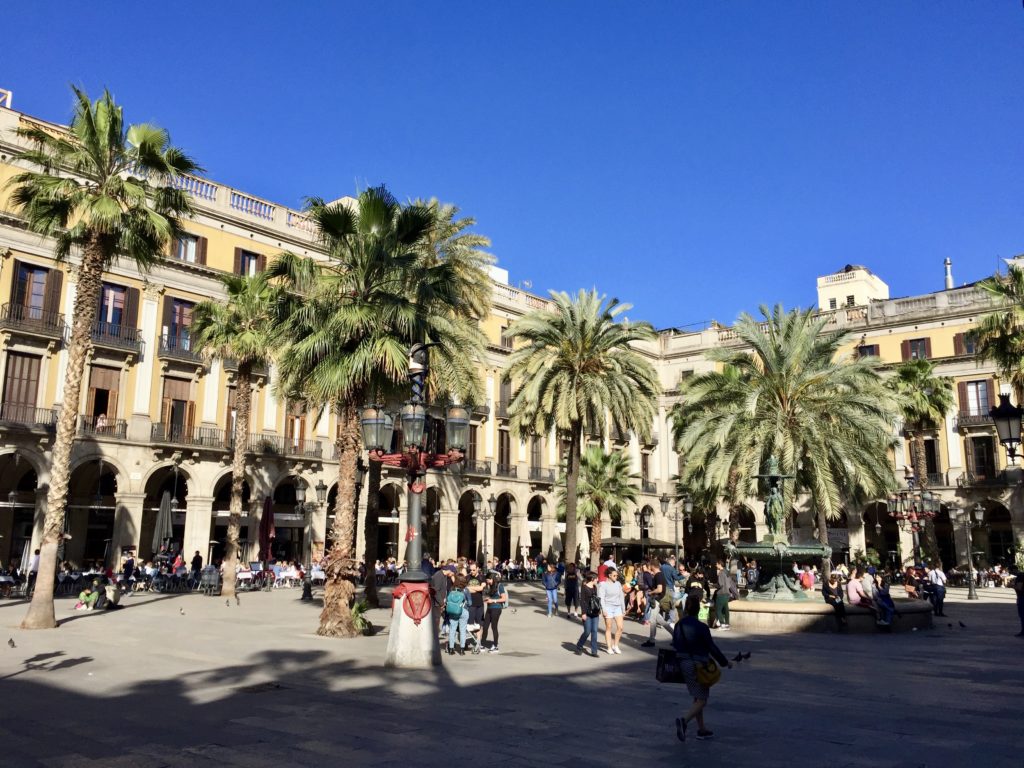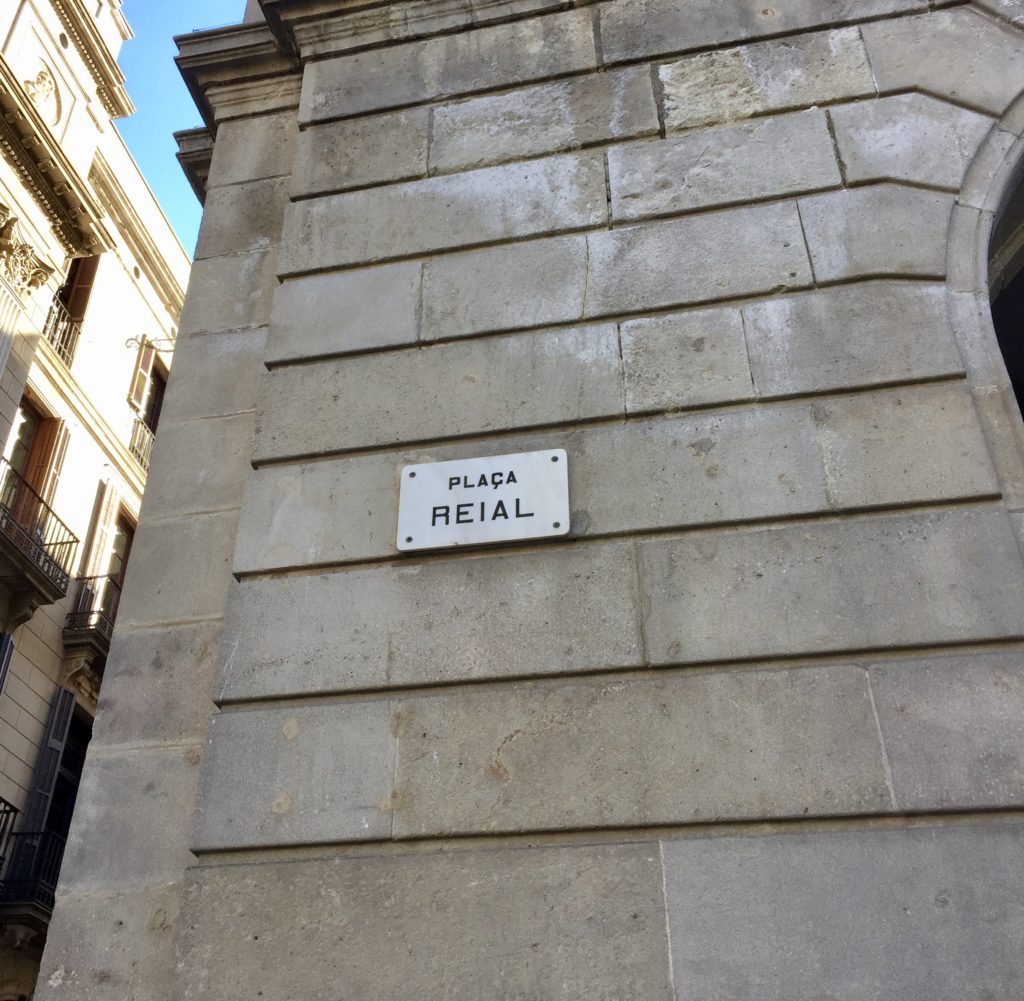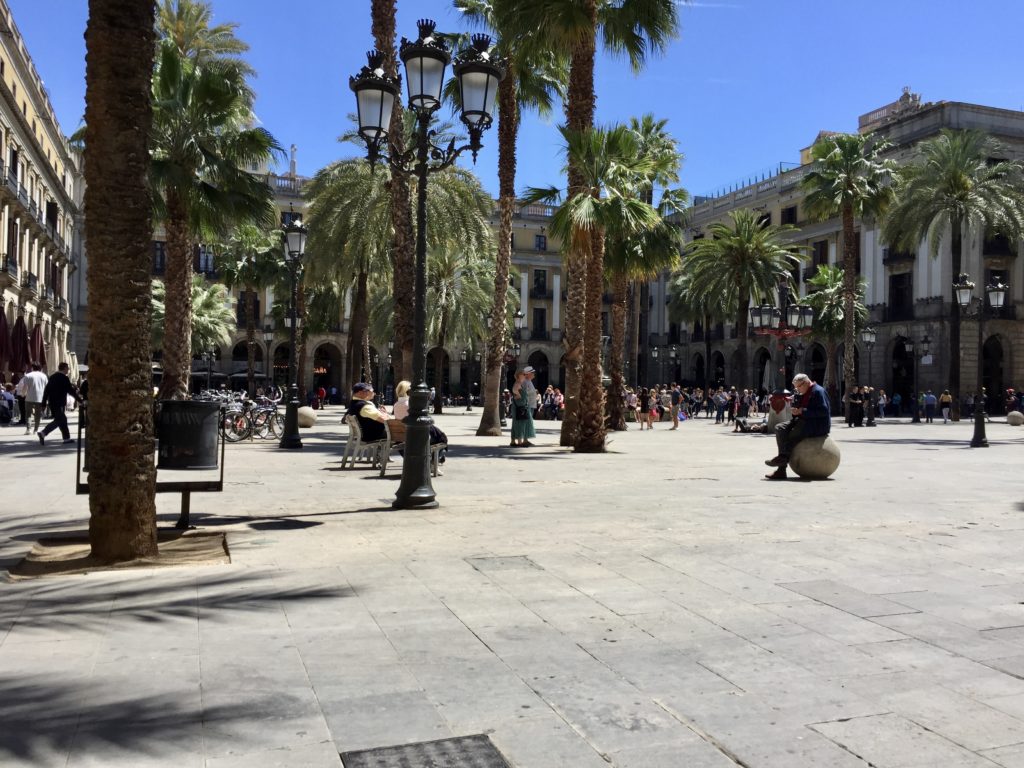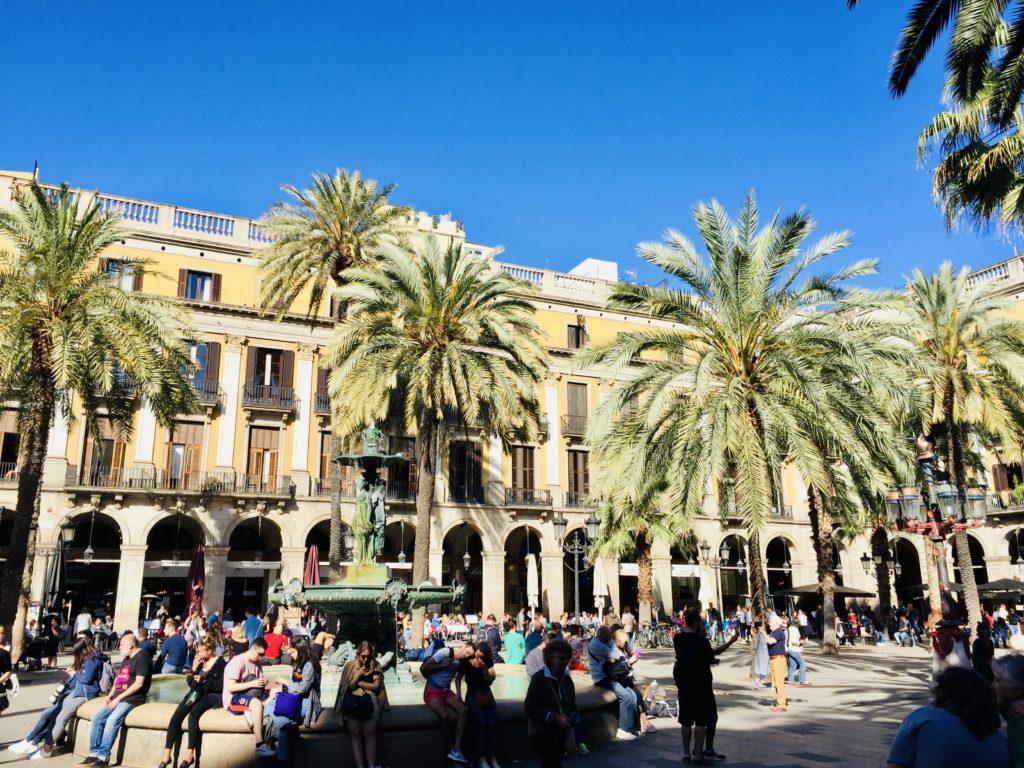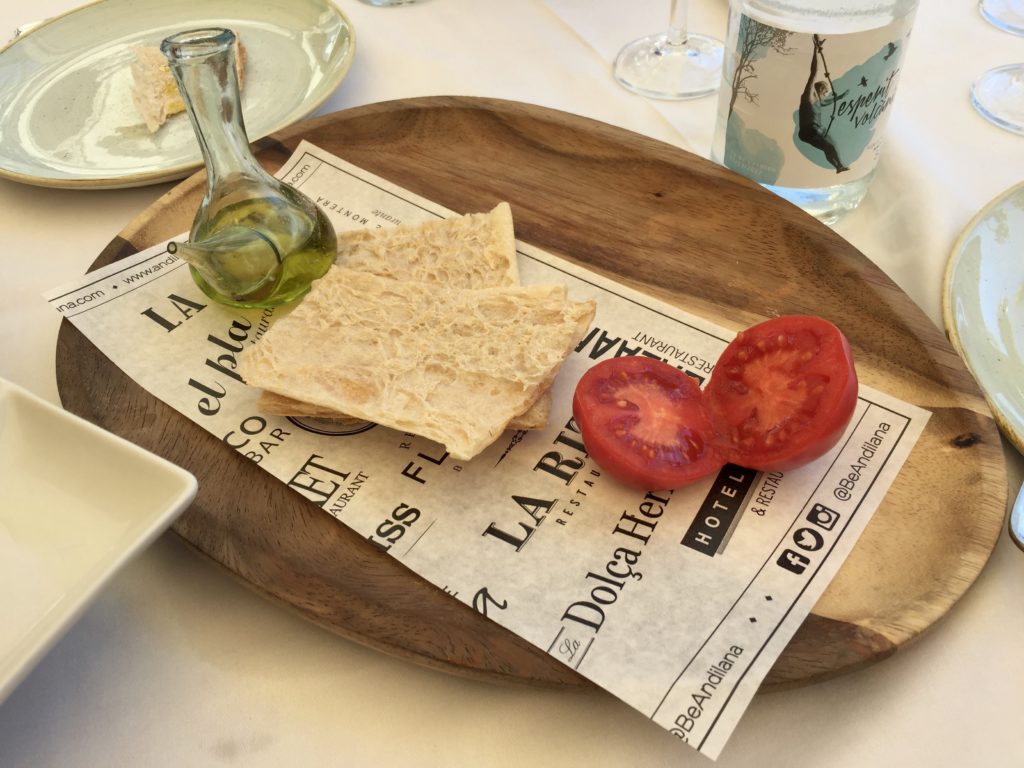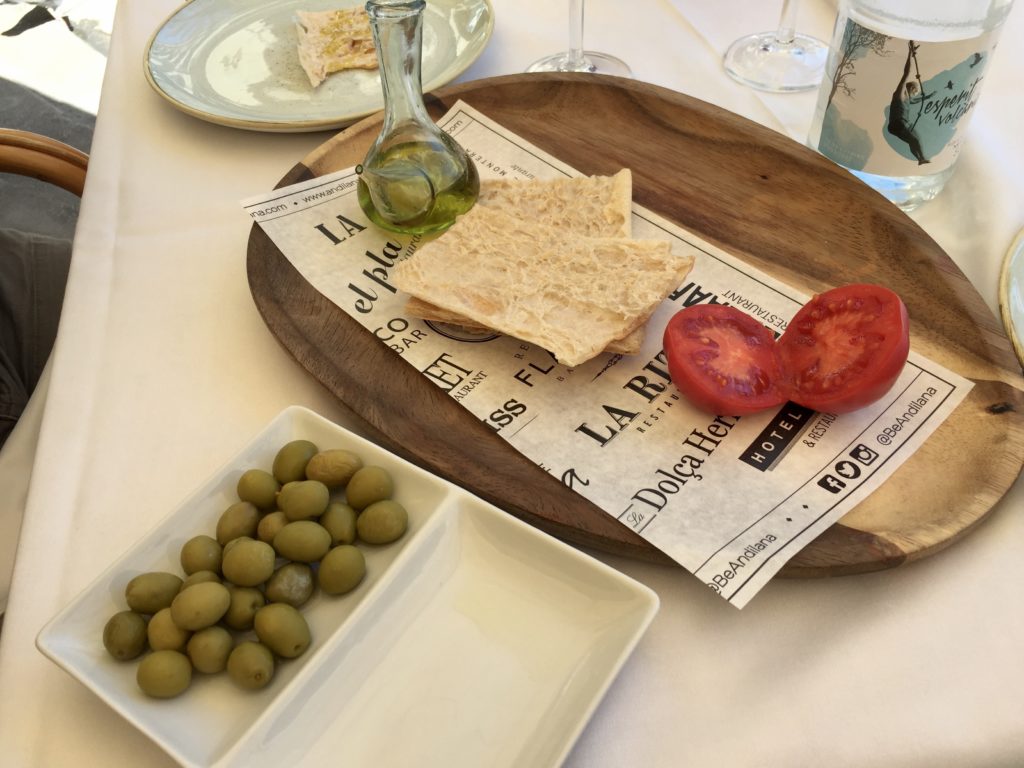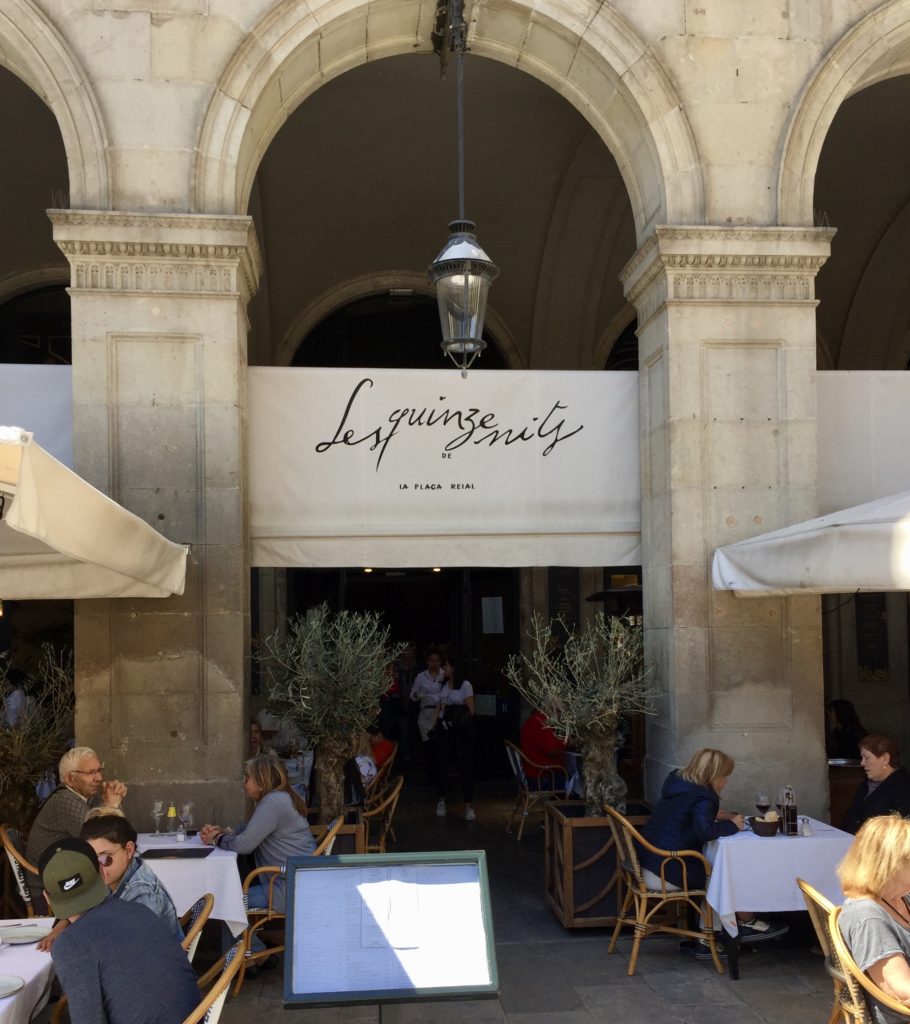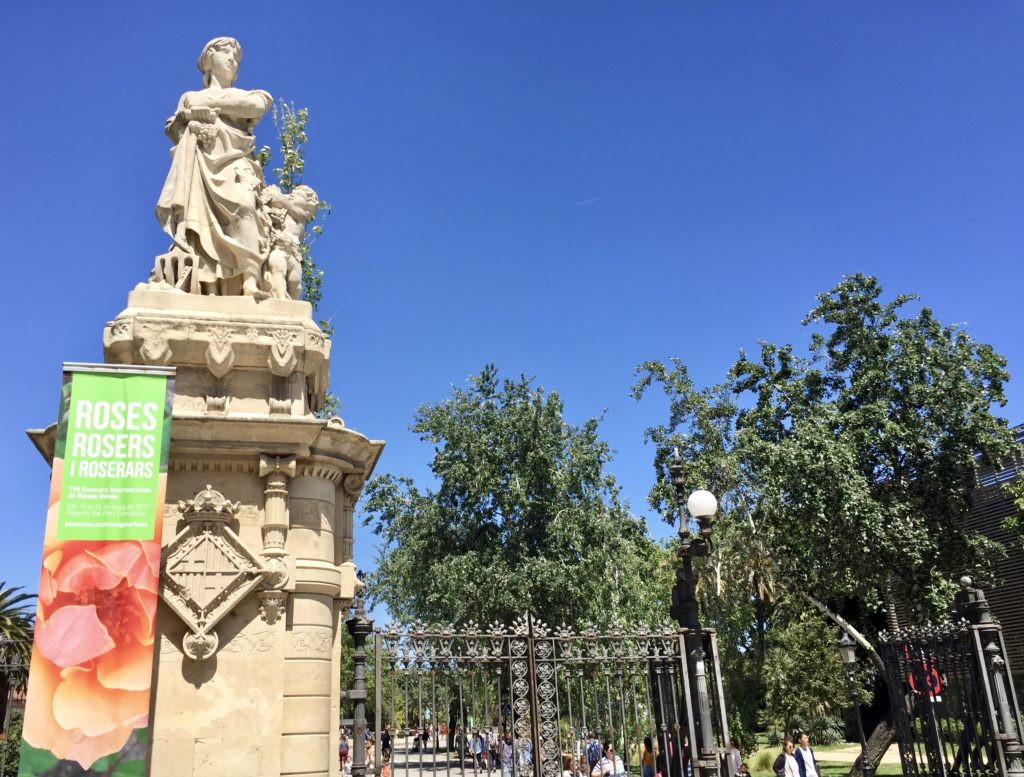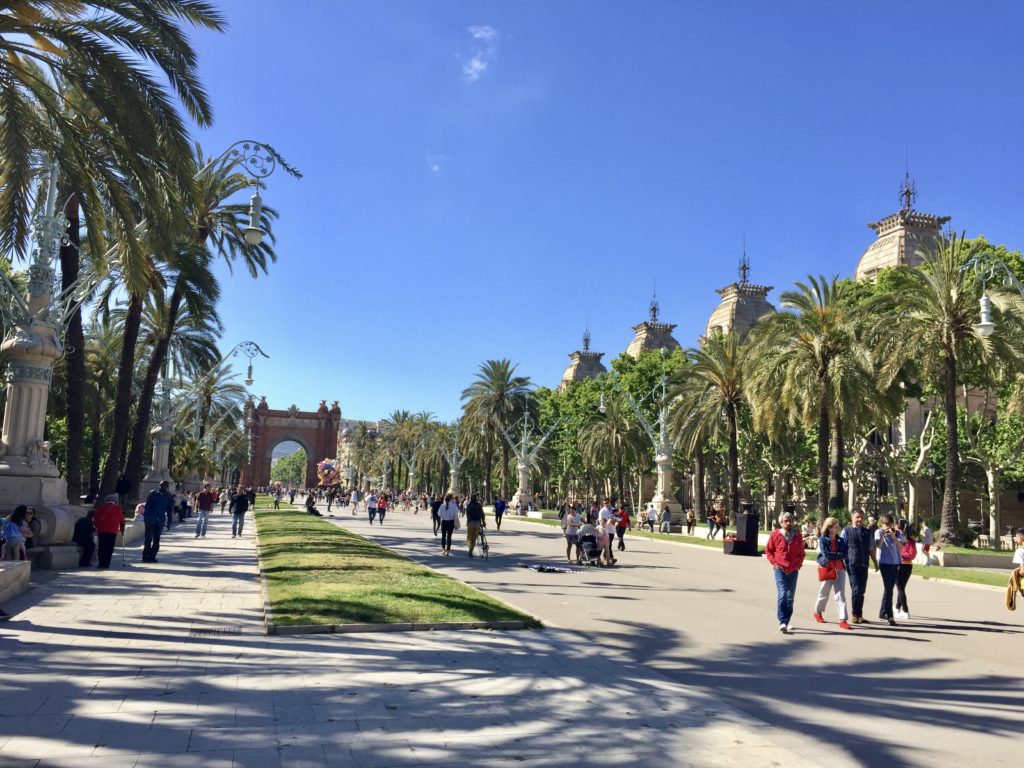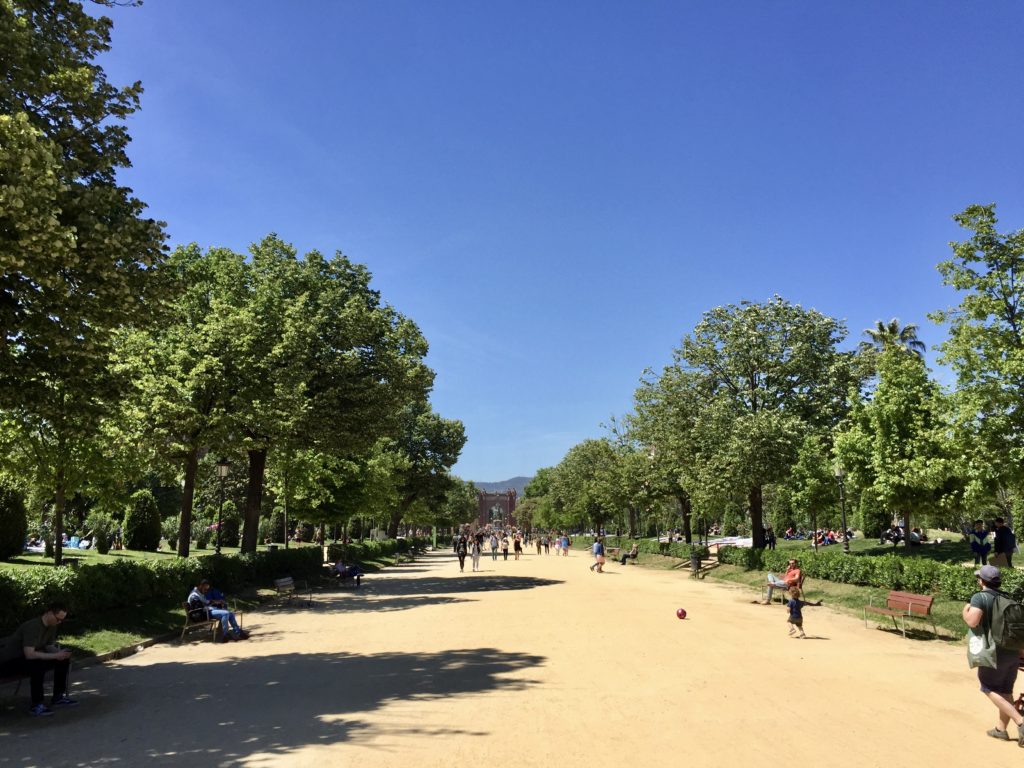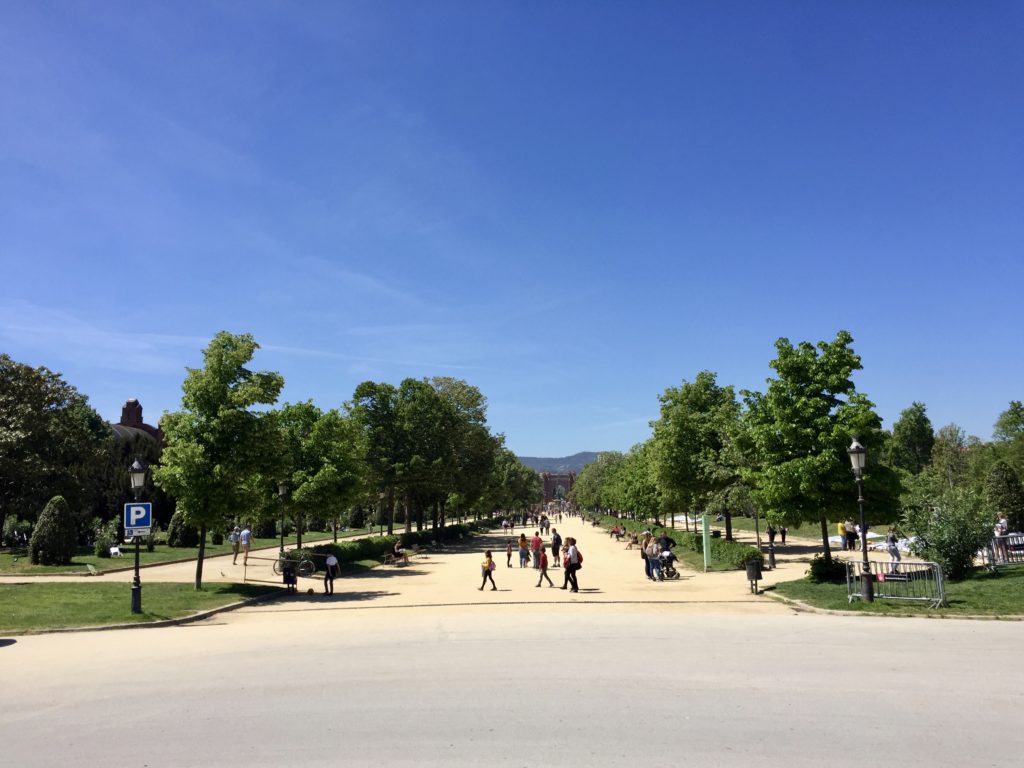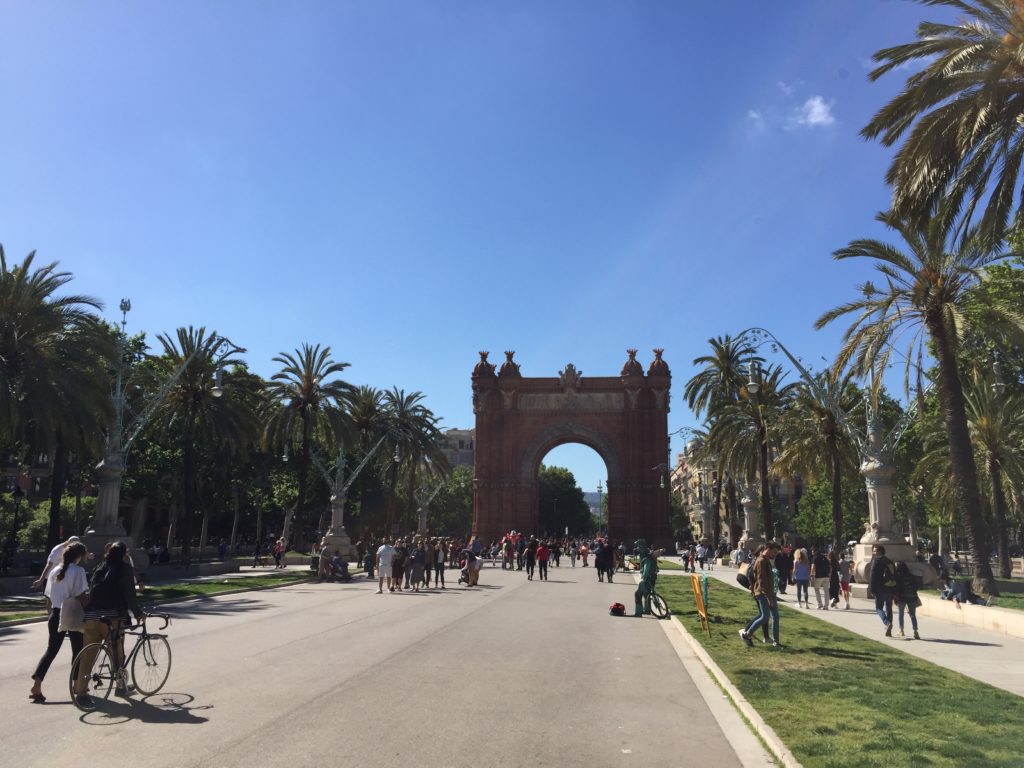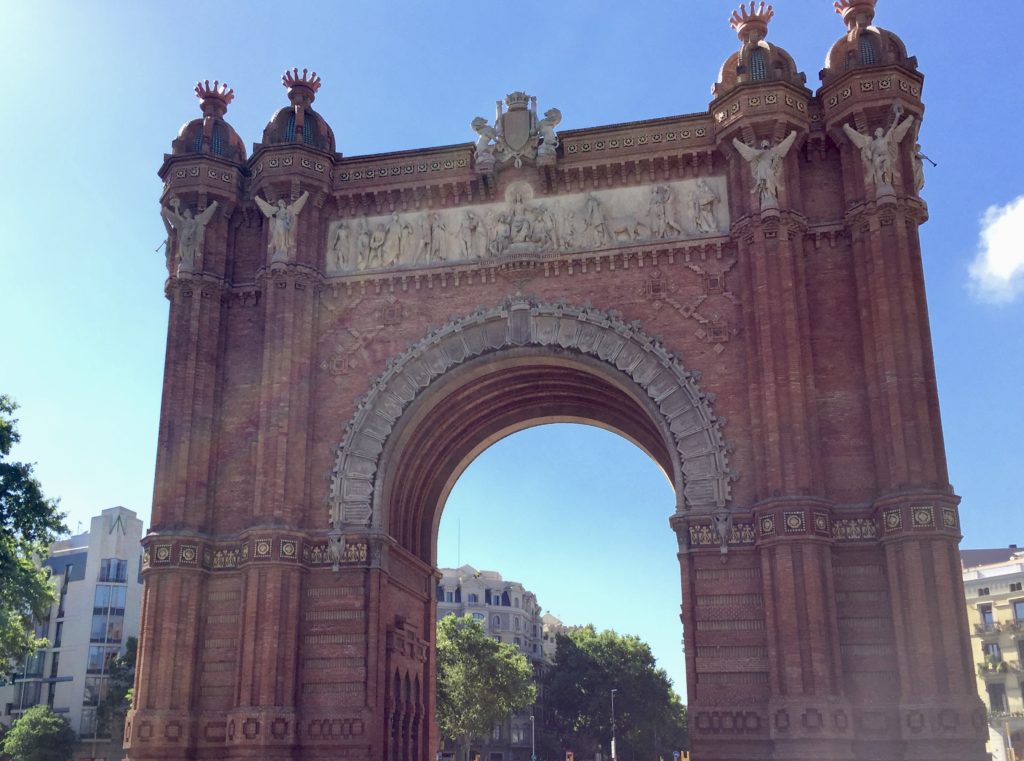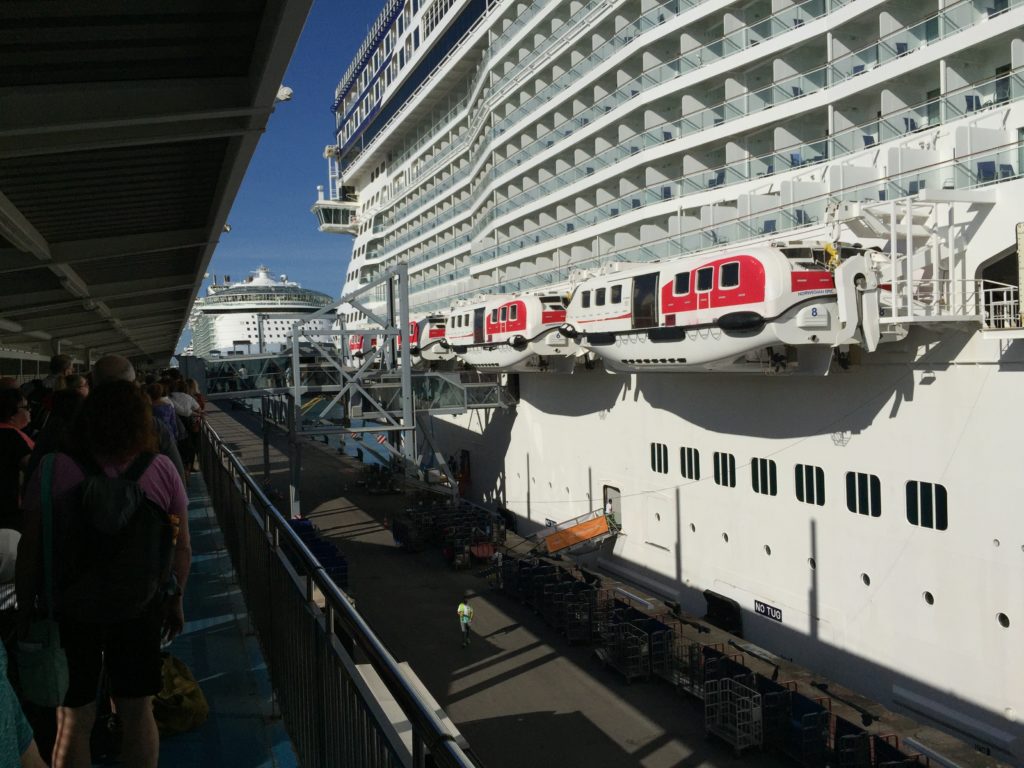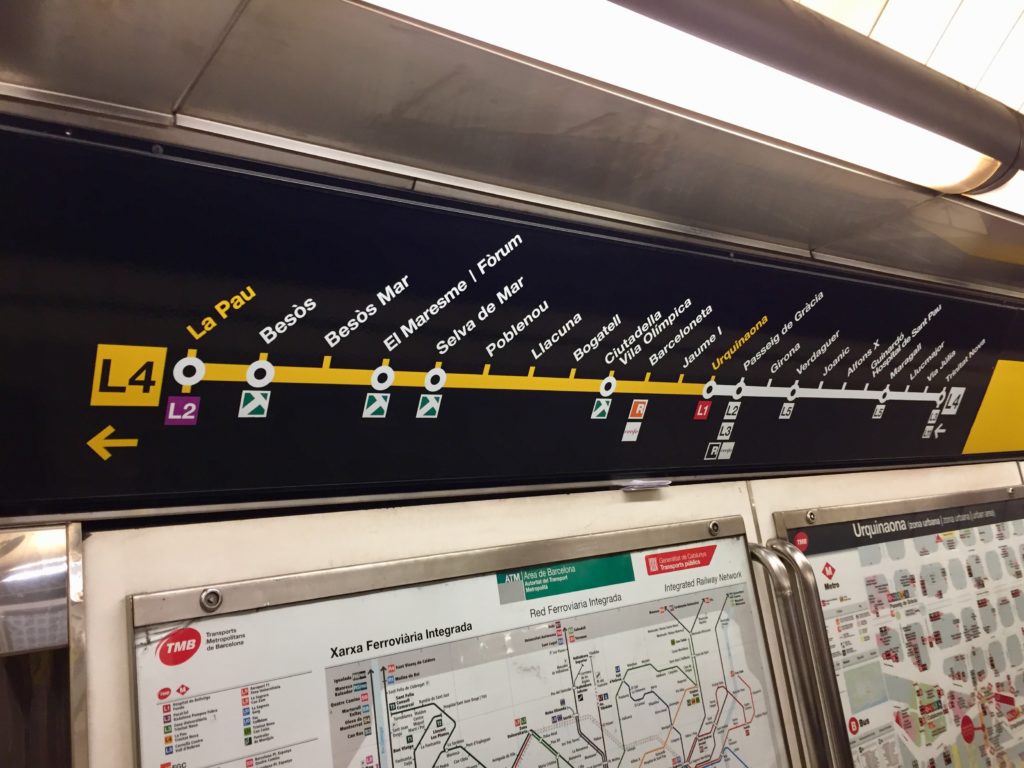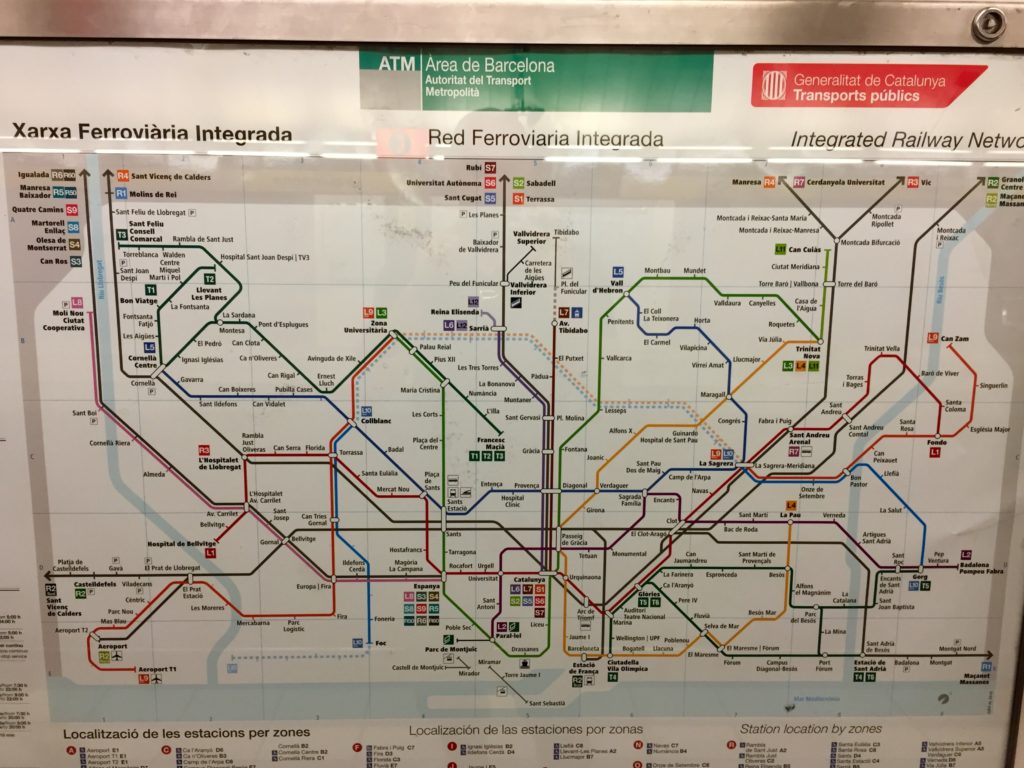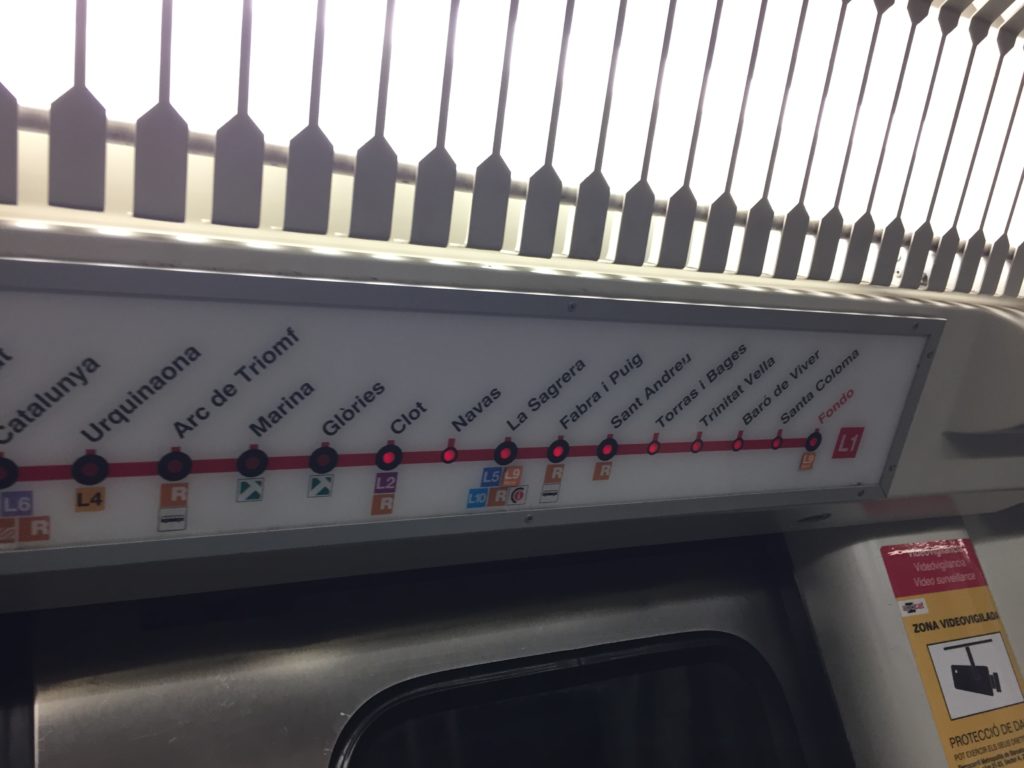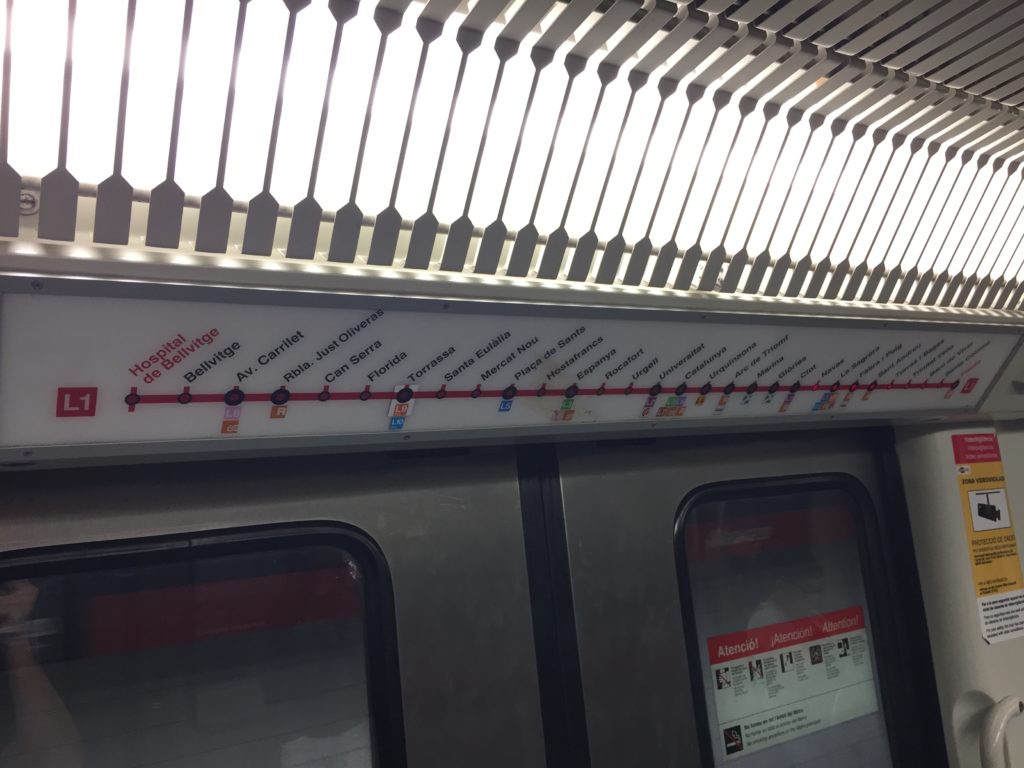Barcelona, the capital of Catalonia, an autonomous community of Spain, is one of the most buzzed about cities in the world. This was JJ’s first visit to this historic city, and my second. Many of our friends, family, and random people we come across all seem to have Barcelona on their bucket list. It’s certainly a unique city, and easily the most popular and most talked about Spanish city. Maybe it’s all the unique history and culture such as the architecture of Antoni Gaudi, or it’s prime location as a port on the Mediterranean, or it’s dominant soccer / futbol teams. Whatever the reason, Barcelona is a city worth visiting and experiencing, and is the city that most would consider the best representation of Spain itself.
Article Summary:
- Major Sites of Barcelona
- Picasso Museum (Museau Picasso)
- La Segrada Familia
- La Rambla
- Plaza Real (Placa Reial)
- Ciutadella Park (Parc de la Ciutadella)
- Port of Barcelona Cruise Terminal
- Barcelona Map / Maps.Me
- Local SIM Cards & Data
- Barcelona Trains / The Barcelona Metro
- Len and JJ’s Overall Rating:
Major Sites of Barcelona
Picasso Museum (Museau Picasso)
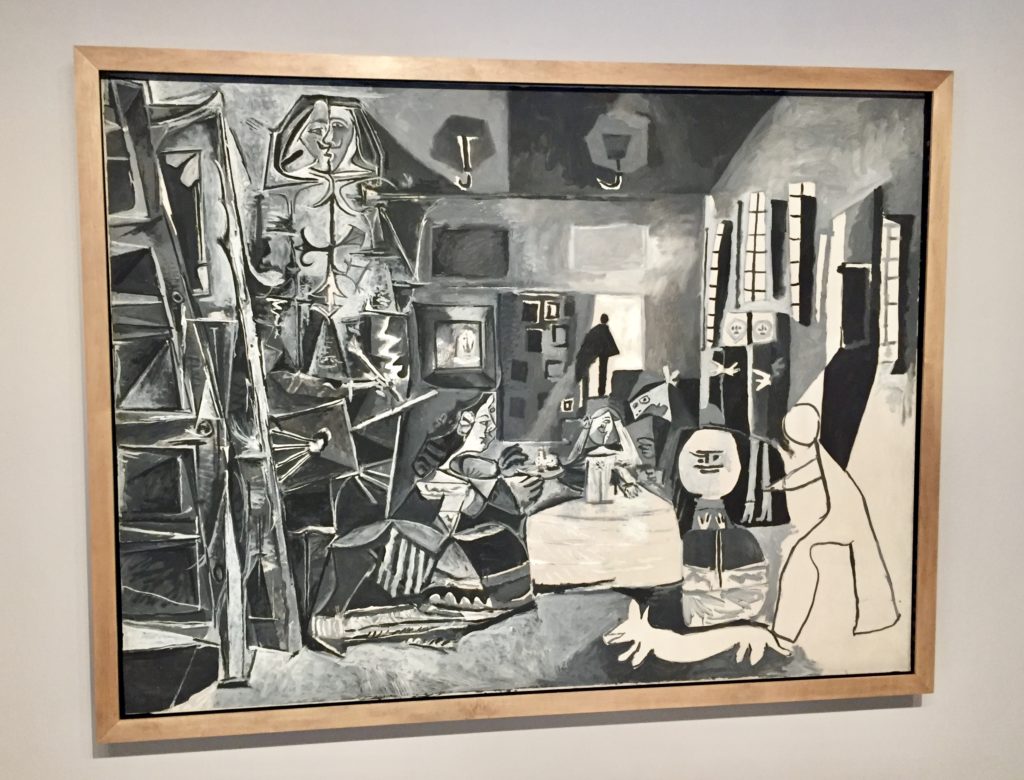
The Picasso Museum was easily our favorite thing we did in Barcelona, and we are by no means art buffs or art history majors. In fact, I barely passed art history in my senior year of college (AKA a blow off class) because I had started my business that semester and almost failed to meet the required class attendance. I “might” have had a few freshman football players sign me in on the attendance sheet for a class or two to barely make the cut. Hey, I passed the tests, so don’t judge me!
Maybe it’s the tucked away, almost hidden location of the museum that adds to it’s charm. Barcelona, like many cities, has what I like to affectionately refer to as “idiot signs”. Idiot signs are great. They point tourists like us who have no idea where they are going in the right general direction at least. Barcelona’s idiot signs happen to be brown. The brown one for “Museau Picasso” points in a strangely diagonal direction from the Parc de la Cituadella, and this diagonal direction is anything but clear. The museum is basically down a very narrow “alley” and is anything but obvious. This fact might also have contributed to the less crowded nature of the museum, and the short line for entry. Compared to say, La Sagrada Familia or any of the other Gaudi landmarks, and the crowds and lines they draw, the Picasso seems actually an all but forgotten Barcelona attraction.
We felt that the museum and flow was expertly moderated. Visitors can clearly see the developing and evolving style of Picasso’s drawings and paintings through different time periods.
His works seemed to get more and more colorful and evoke more of his individual style as Picasso’s skills and confidence grew.
We honestly have no idea what makes Picasso’s works great. We’ll leave that to the experts. All that we noticed is that his works are undoubtedly interesting, unique, and fun to look at. Maybe the simplicity and oddity of that fact is the real genius. We had a great time and highly recommend the Picasso Museum.
After the Picasso Museum, you should hit up virtually any of the Gelato places around the corner, because Gelato…
La Segrada Familia
Our experience with La Segrada Familia is sadly one of missed opportunity. We have since read on Trip Advisor and other travel advice websites that it is very important to pre-plan and pre-purchase a ticket to access La Segrada Familia and the Gaudi Museums ahead of time. The day we visited, it appeared that basically every school aged child in Barcelona was on a collective field trip that day. Tickets were sadly, sold out, and this was our last day in Barcelona. Thankfully, our readers can learn from our lessons, and pre-purchase their tickets through Trip Advisor / Viator.
No matter, we enjoyed this iconic and dare we say, extremely oddly shaped and designed church from the exterior. As you can see from our photos, a lot of restoration work was underway, hence the large cranes in every picture. Honestly, it’s not hard to tell where restoration has been done, and where the “new” parts on the right side of the church don’t quite match the “old” parts on the left side. The Sagrada is still a sight to behold and still worth a visit when in Barcelona, even if you only get to see it from the outside looking in.
La Rambla
La Rambla or Las Ramblas is the iconic street of Barcelona. Even though this was my second visit to this storied city, I didn’t realize previously that “La Rambla” is short for “La Rambla de Catalunya” . Yes, the same Catalunya that was recommended as the most centrally located metro station previously in this article.
What most people and blogs won’t tell you is that even though La Rambla is iconic and is somewhere you need to walk the length of at least once in your life, is that it is about as touristy as touristy can get in Barcelona. Any time you stroll down such a wide street with endless cafes and bars, yet you don’t see a single local Barcelonian partaking in any of them, that’s your first clue that these places are likely to be avoided. If you do find yourself on Rambla, and feel the need to take in the atmosphere, we would actually suggest venturing into the Plaza Real.
Plaza Real (Placa Reial)
Complete with palm trees, fountains, and a pedestrian-only setting, Plaza Real or Placa Reial is sort of a mirage or oasis tucked away from the madness of La Rambla. The perimeter of the plaza is stuffed with a cafe or restaurant in virtually every imaginable space.
Les Quinze Nitz (Plaza Real)
JJ and I walked and looked discerningly at every menu of every restaurant available, and settled on the lovely Les Quinze Nitz. There basically wasn’t anything authentically Spanish about it. It looked more like a polished chain than a mom and pop. But the menu had good looking food options and reasonable prices, even if it was only cleverly masking it’s tourist trapy-ness.
The food was tasty and just what we wanted. Most importantly, our view of palm trees and sunshine was lovely, and much quieter than the hustle and bustle of Rambla. The final and most telling clue that Les Quinze Nits was indeed a touristy establishment, was that a 10% gratuity was included on our bill. For those American readers that don’t know, tipping is basically unheard of in Europe. One of our favorite things about eating out in Europe is that the price on the menu is the actual total price you pay. It includes all taxes already as well as the service. American’s are used to the price on the menu being the “introductory” price, where you’ll add an 8.25% Tax (at least in Texas) and at least a 15%-20% Tip or Gratuity for good service in any sit down restaurant. In that vain, even though the Euro may be worth about $1.12 at the time of this publication, a 12% exchange difference, by that math, eating out in Barcelona and most of Spain is actually 16% less expensive than in most of America. We like that.
Ciutadella Park (Parc de la Ciutadella)
A final landmark and public attraction worth seeing in Barcelona is the the Parc de la Ciutadella. On a sunny day, people flock to this park and cover every green grassy area they can find. It reminded me of St. Stephen’s Green in Dublin for that fact alone. It has a beautiful, wide walkway that leads to the Arc de Triomf at the end of it. You might hear musicians or see magicians performing. Just remember to tip them if you take a picture or video.
Port of Barcelona Cruise Terminal
This was our first time in the Port of Barcelona, which is where our 15 Day Transatlantic Cruise out of Florida had ended. This is a very busy port and we were 1 of 4 cruise ships ending our routes in Barcelona that day. That made it sort of a madhouse, but we’ll give Norwegian and the Port of Barcelona credit, everything was organized and the debarkation process was pretty painless.
One thing we learned is that we still have no idea how to exit the port and cruise terminal on foot. When I asked one man directing traffic about it, he pointed in the opposite direction and told me it would be “cuarenta y cinco minuta de caminando”. A 45 minute walk. We rode the bus to the city center for 4€ each. We noticed that basically all of the people who worked for Norwegian from our ship were doing this. When in doubt, get in line and follow the crowd if they look like they know what they’re doing.
Barcelona Map / Maps.Me
Even experienced travelers such as JJ and myself (who have collectively been to over 30 Countries at the time of this publication in May 2019) can still occasionally lose their way in an unfamiliar place. We made the mistake of not having a very clearly routed map from our desired Metro station “Clot” to our Airbnb apartment’s exact address. We “thought” we knew the way and where it was exactly, but exiting the wrong street choice from any underground metro system like Barcelona’s can spoil those best laid plans quickly. In our defense, when you are on a cruise for 15 days, you are in a bit of a digital black hole. Even if you have an internet plan on board, the speeds are a joke and it takes you four times as long to do anything. This means we were grossly under-researched for simple directions to our flat.
Long story short, after dragging our luggage all over the “Clot” area for over 30 minutes, some kind Spaniard finally took pity on us and looked up our address on Google Maps using his data. Even after that, it still took a few extra twists and turns to finally get there. The moral of the story is, if you do not have international data on your primary phone, ALWAYS have clear directions to your hotel or airbnb that is 100% viewable offline (such as in an Evernote shortcut which is my personal favorite offline data storage app, or we now know, even better, a Maps.Me offline map) before you get stuck aimlessly wandering the streets of Barcelona, and your wife wants to kill you and vice-versa.
MAP TIP: Funnily enough, JJ and I didn’t know about Maps.Me until a lovely Spaniard named Angel’, who we met in Marrakech, Morocco, told us about it.
This app is an absolute life saver for people who do not want to use international data or roaming. Maps.Me lets you download maps of whole cities “offline”, and it still provides navigation, searching, and directions based on your phone’s GPS (which is always on) instead of data or an internet connection. We would have found our Airbnb about an hour sooner in Barcelona had we known about it at the time. It’s absolutely Free, and we’ve actually found it more accurate and easier to navigate than Google Maps for walking directions specifically. It would have not only made finding our Airbnb faster, but also the tucked away Picasso Museum and any other walkable attraction with ease (instead of relying on those often vague “idiot” signs around Barcelona).
Local SIM Cards & Data
We pretty much don’t use and don’t recommend using International Data on your primary U.S. based cell phone plan, as it is ungodly expensive. We now instead buy local SIM Cards and cheap Data Plans to use on an old iPhone, and just “tether” our primary phones by turning on the Mobile Hotspot feature. Local SIM Cards and Data are very easy to find in an airport, and while more expensive than what you may find in town, you can start using the benefits (such as Uber, Grab, Maps, etc…) before you ever get out into the city.
Most “unlimited” Data plans will not allow tethering or mobile hotspots, so be aware of that. If you choose to put the local SIM in your primary phone, just be prepared that features like iMessaging on iPhone may not work correctly, and your phone number will also change to a local # as well for the duration of your trip. This is why we like the “old phone” method, which also keeps us from needing to buy multiple SIM Cards.
The only thing we’re not sure of is where to get a local SIM card near the port of Barcelona. This is much more easily accomplished at the airport.
Barcelona Trains / The Barcelona Metro
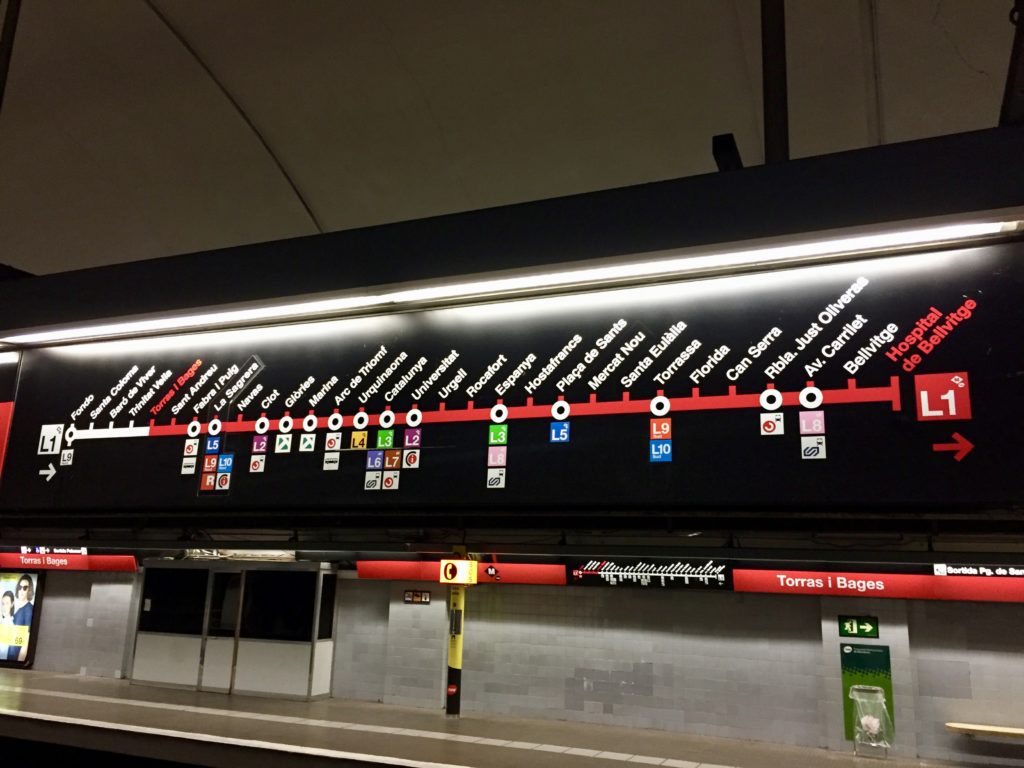
The Red Line is the main line in the city. It’s basically the backbone of the Metro and probably the busiest line. From the cruise port we needed to get to “Clot” or “El Clot” on the red line as mentioned above, which was the closest to our Airbnb. The closest station to the cruise port was Barcaloneta, which was a yellow line and not that easy to find without Google Maps. JJ was smart enough to ask a few cops at the port, “Barcaloneta?” and they collectively pointed “that way”.
When we eventually found it, we took Barcaloneta yellow to Urquinoana, which was our connection and transfer to the red line. From Urquinoana, we took the red line to Clot, so far so good actually. 4€ each for bus tickets, 2.20€ each for one-way metro tickets, and we were inexpensively, yet efficiently navigating the city, fresh off the boat as it were.
At the Clot station is where things got harry. For starters, we didn’t know it at the time, but we exited the wrong street at Clot.
Metro Tip #1: With any subway or metro system, you need to know the end point stations on any same colored line.
On the Barcelona red line, one direction is Fondo, while the other is Hospital de Bellvitige (as you can see from the map images above). On the picture below, you’ll see that “Clot” from “Urquinoana” is toward the “Fondo” direction or end line.
Metro Tip #2: You need to know which street exit you want to take once you reach your desired station or stop.
We now know in 20/20 hindsight, that from Clot, we wanted to exit the Valencia side. Then take Valencia, to Montunya, across Argo to Soler i Rovirisa and our Airbnb. Exiting Valencia, instead of Meridiana, made all the difference in the world on future return metro trips. When you’re underground in the metro and subway, you’re 100% dependent on the signs around you. You must know the street exit you are taking, or it’s easy to get turned around or head the wrong direction once you are topside.
Metro Tip #3 (Barcelona Only): The Catalunya stop on the red line is probably the largest major hub for any metro line that’s right in the heart of the city. It also has the easiest access to the famous “La Rambla” which is short for “La Rambla de Catalunya”. Catalunya has connections for almost every different colored line in the entire Barcelona Metro system. If you’re ever in doubt or confused, you can head to Catalunya from virtually any colored line, then switch lines and correct course as needed from there.
Len and JJ’s Overall Rating:
Worth Visiting At Least Once
In closing, even with several days in Barcelona, we may not have seen every famous architectural work by Gaudi, or visited the beach, or any number of the long list of attractions every travel blog under the sun calls a “must do” in Barcelona. I didn’t even get to eat paella this visit, because you always have to pay “per person” and JJ has a seafood allergy, making it not worth the cost. But one of our gospel travel rules is that “you can’t see everything”, and the only “must do” is to enjoy yourself. In that vain, we can report that what we did see in Barcelona was worthwhile and made for a stark contrast to the quieter towns of Spain that we had visited before our arrival such as Cadiz and Malaga.
Our Site may include some Affiliate Links sprinkled in amongst our completely free, and hopefully helpful content. That means we earn a small commission when you purchase or book something (at no additional cost whatsoever) through our links. It’s like a beautiful “thank you” to Len and JJ and it doesn’t cost you anything! We’ll probably spend it on chocolate or a Thai massage.


